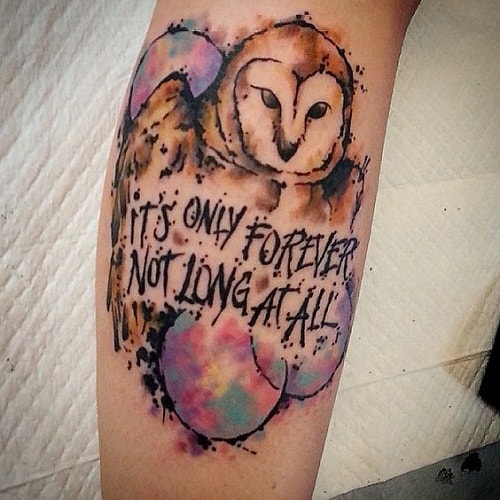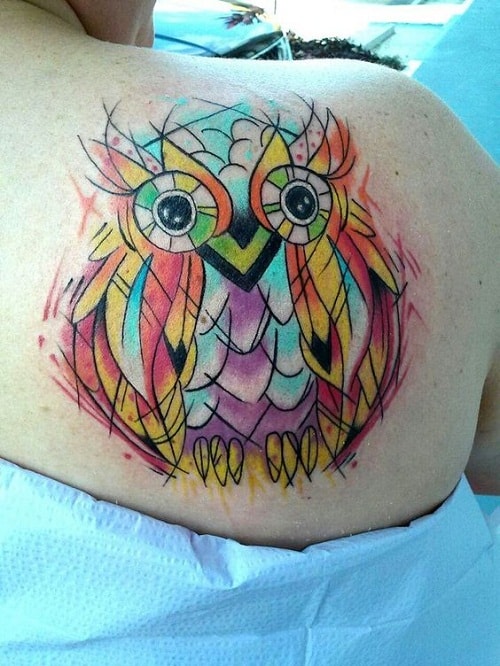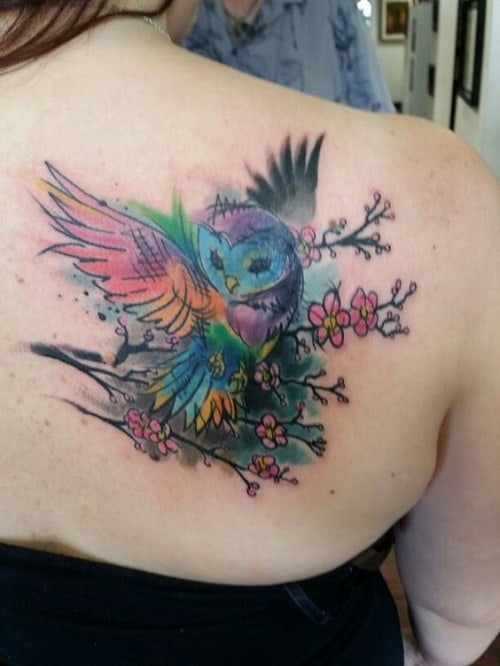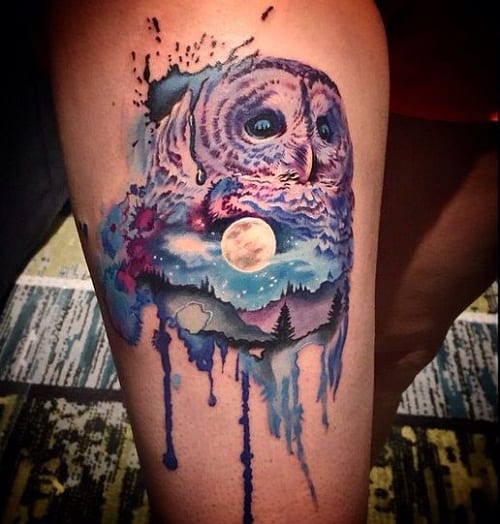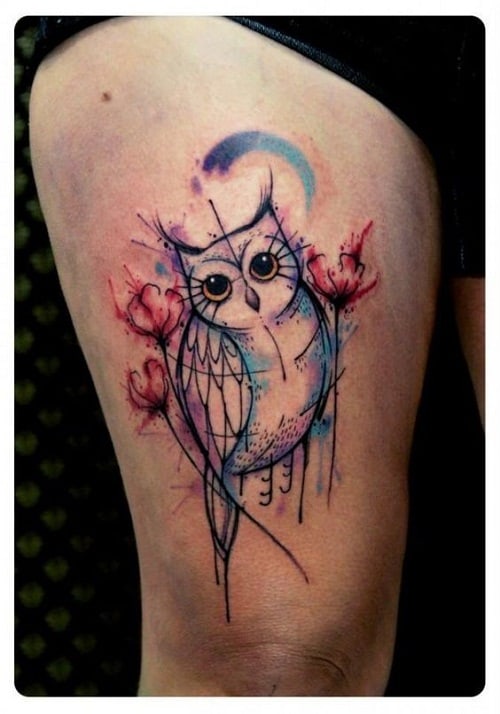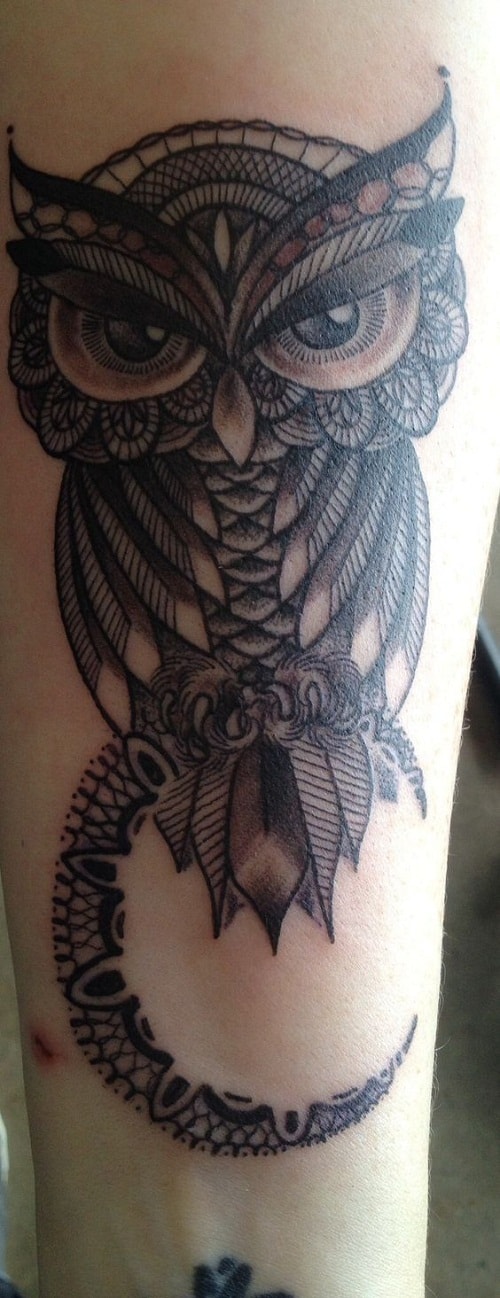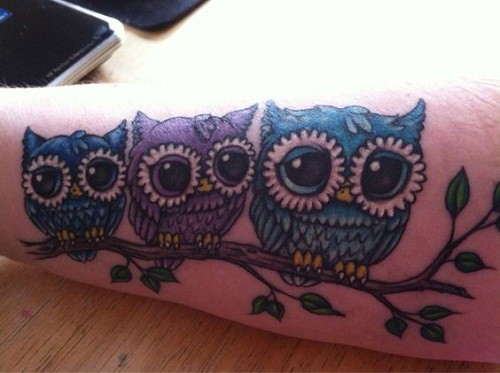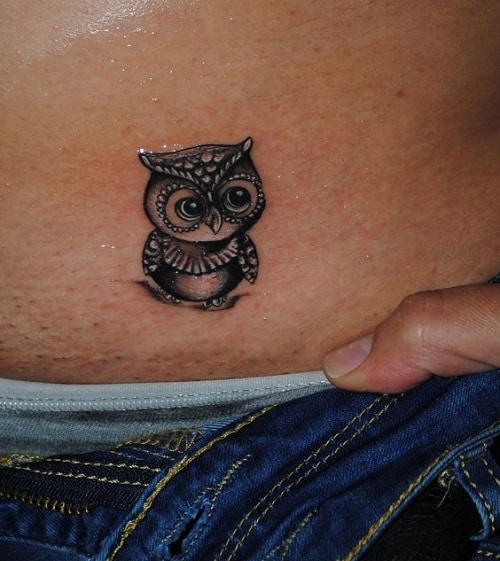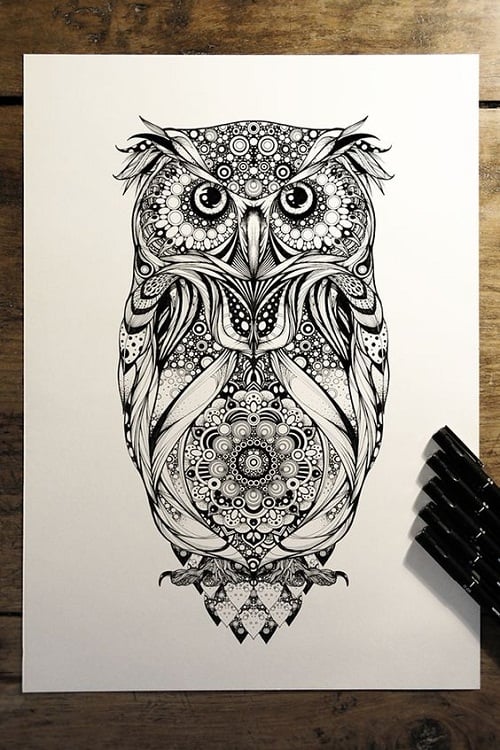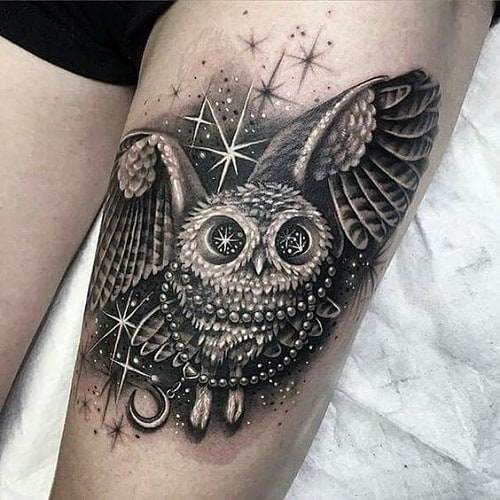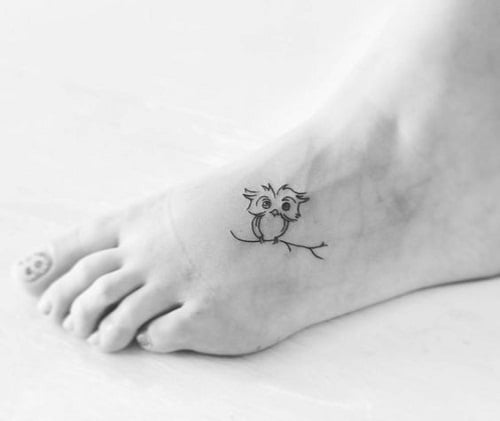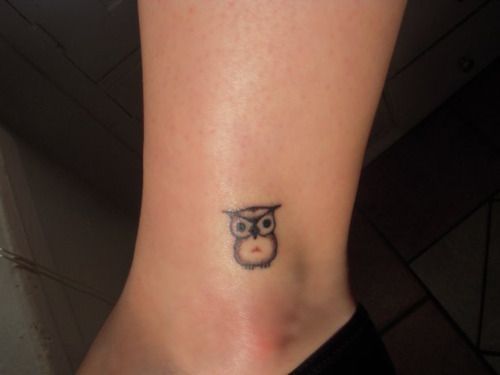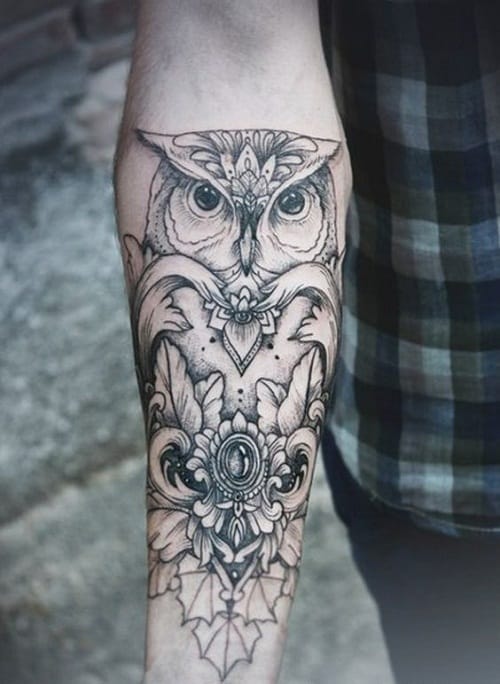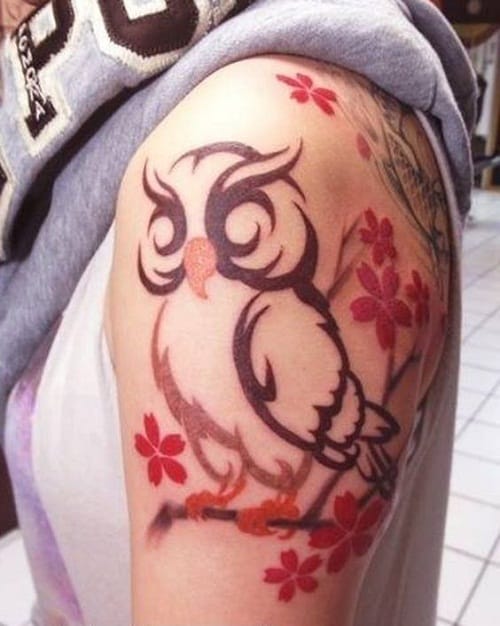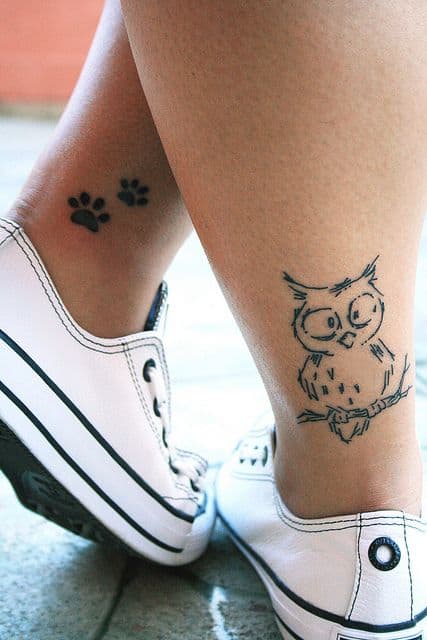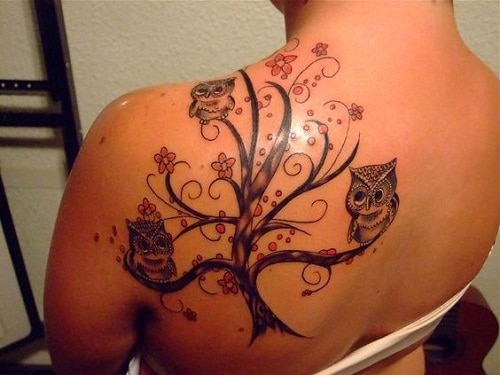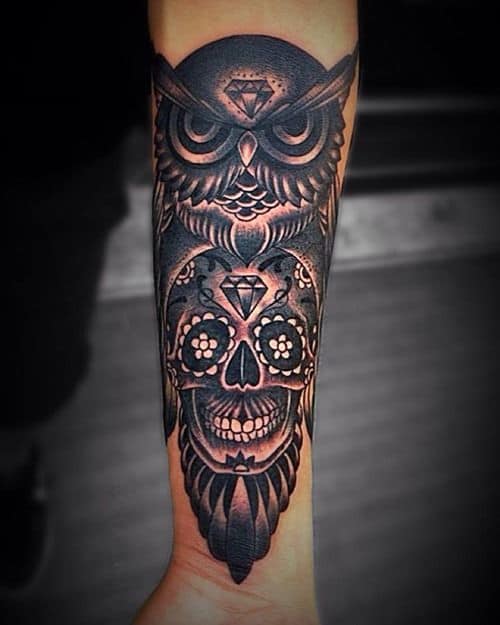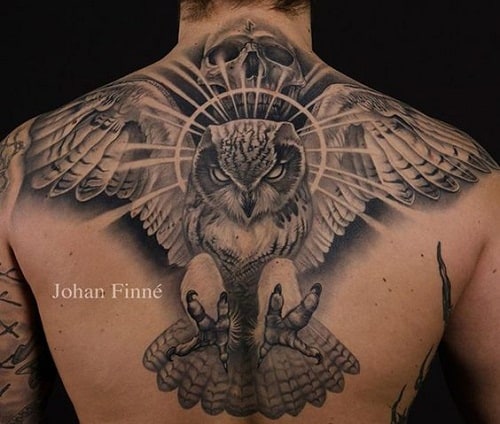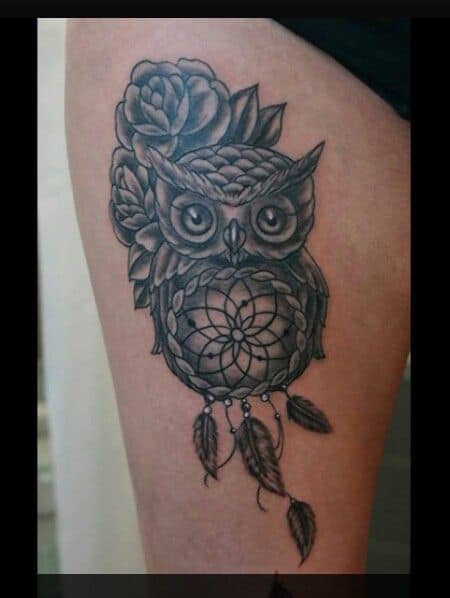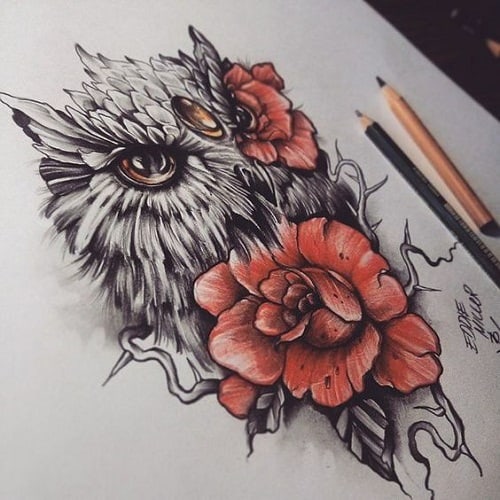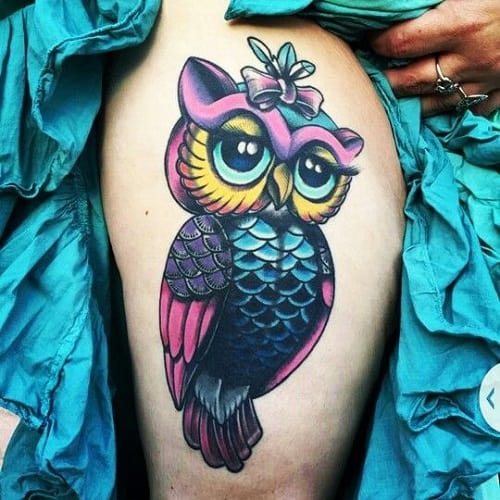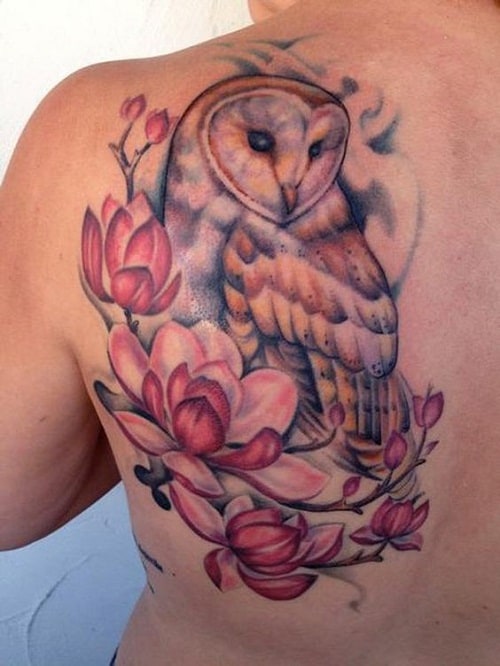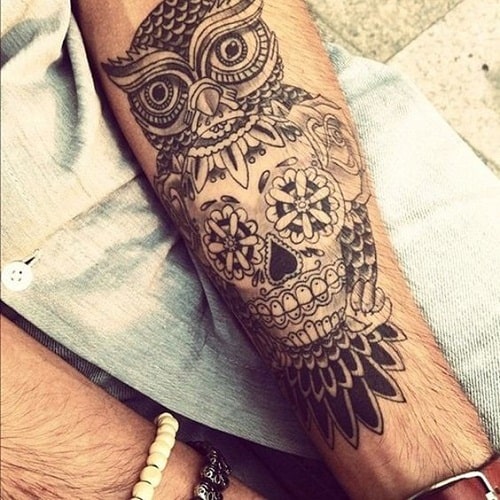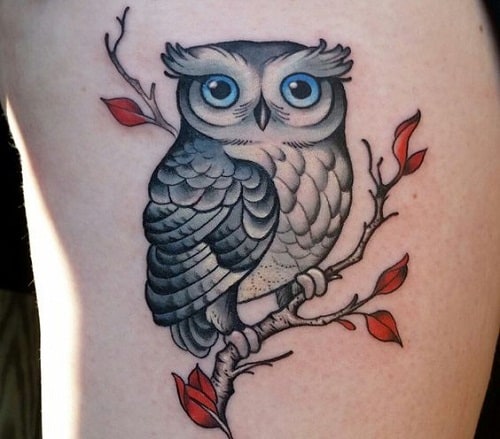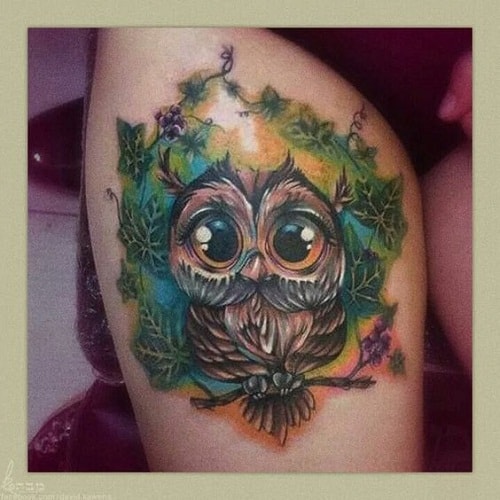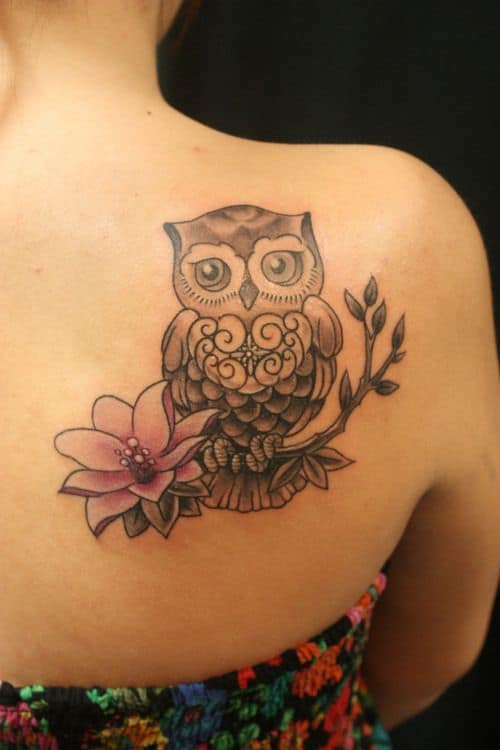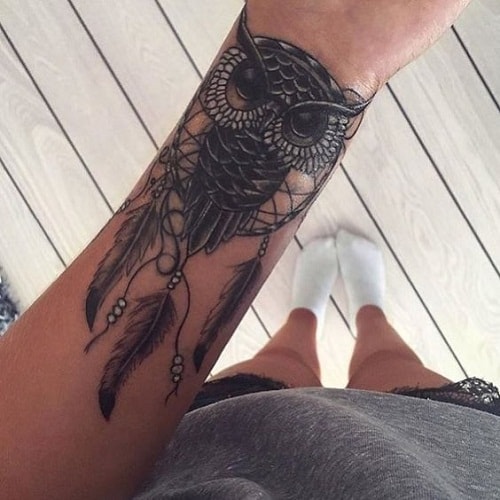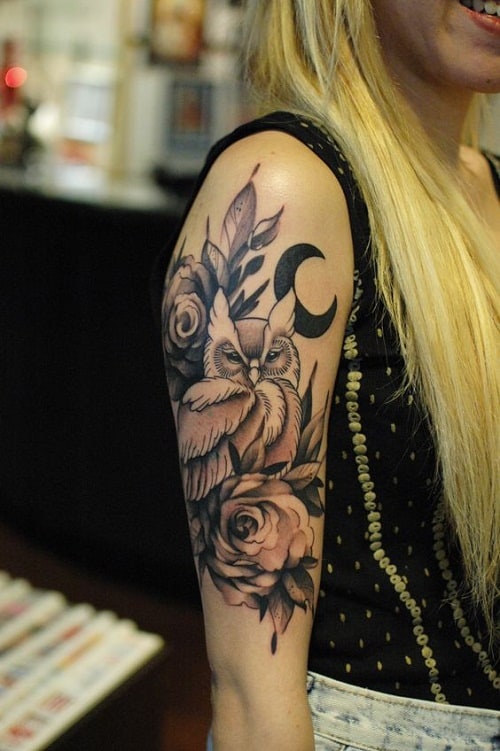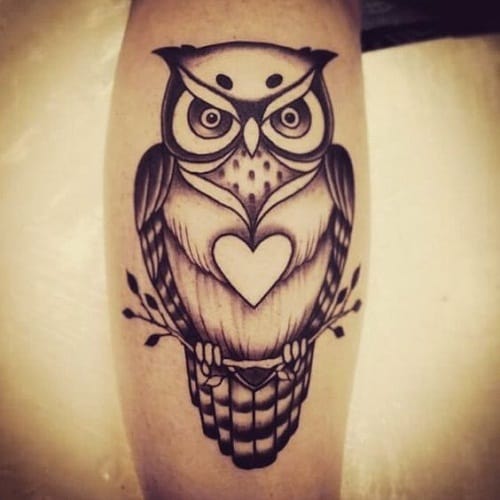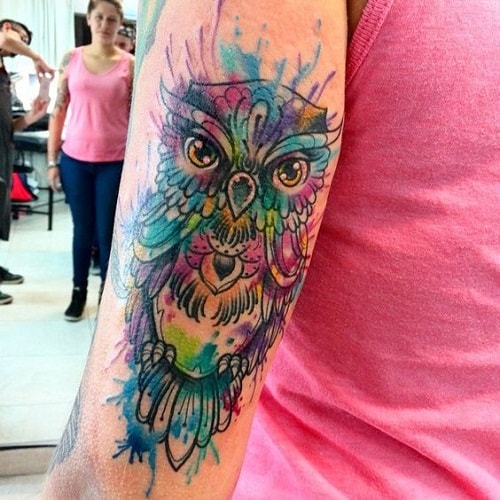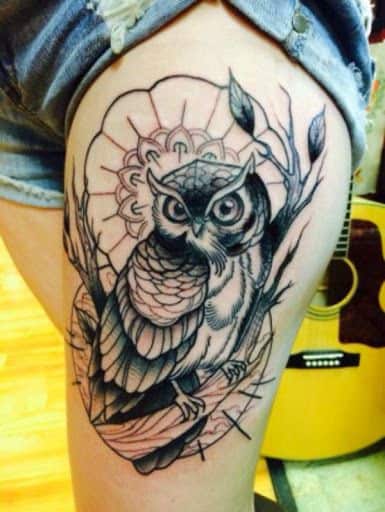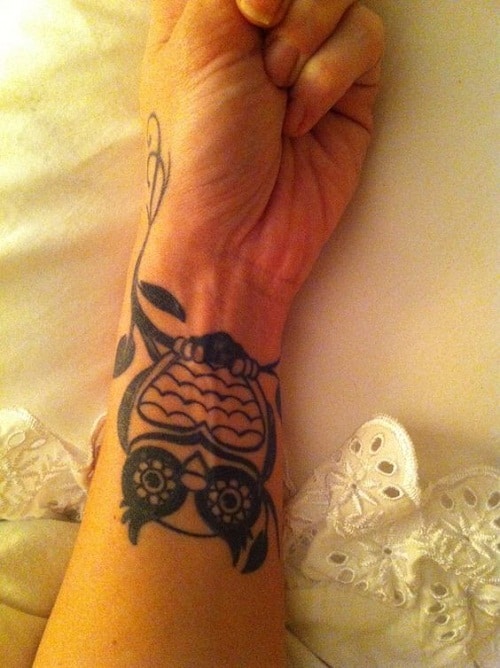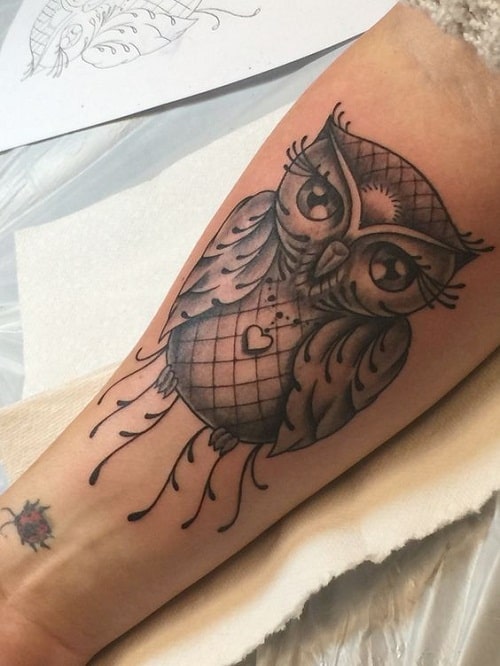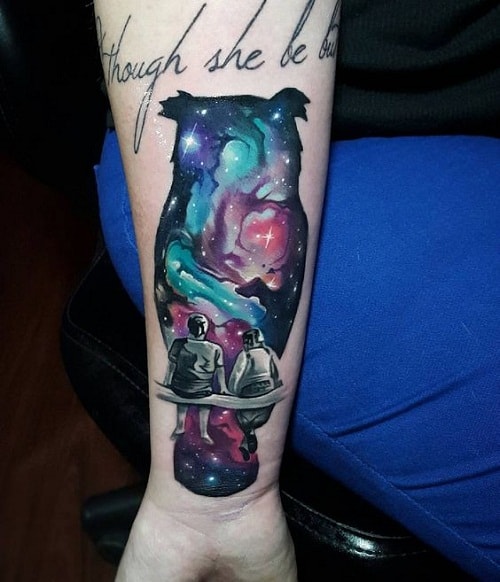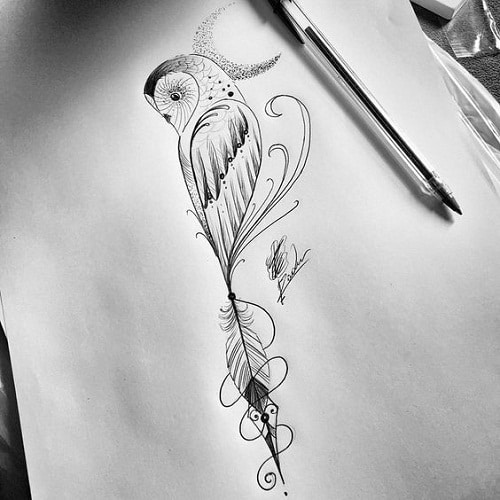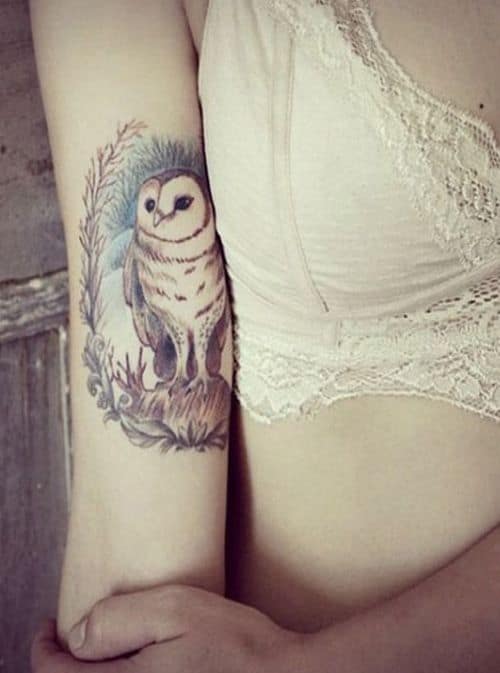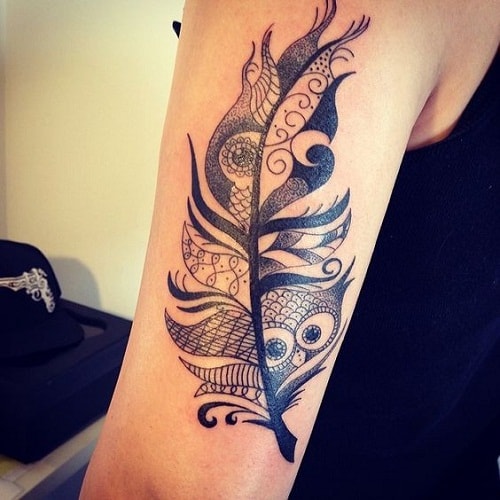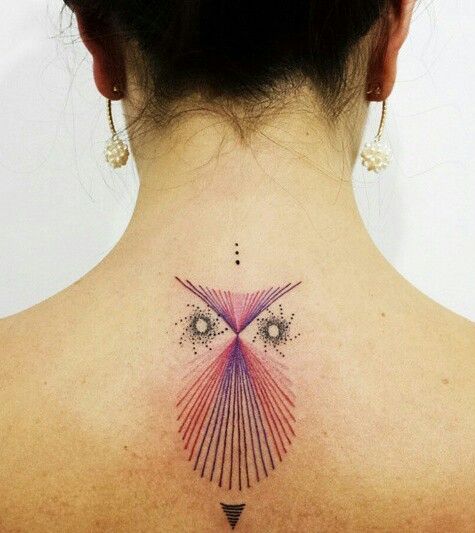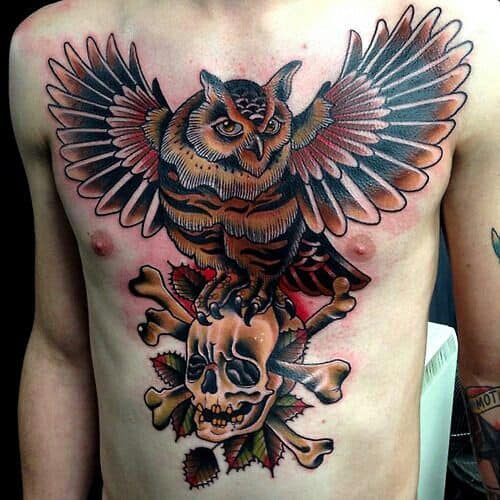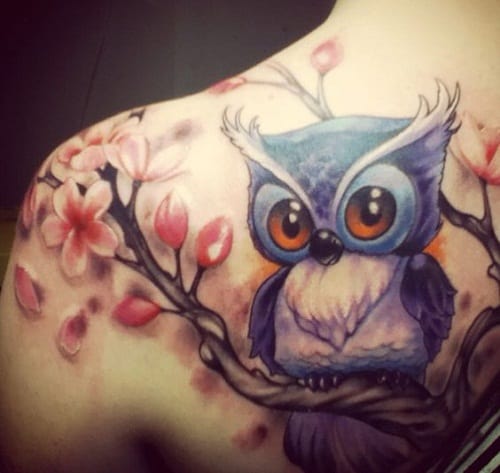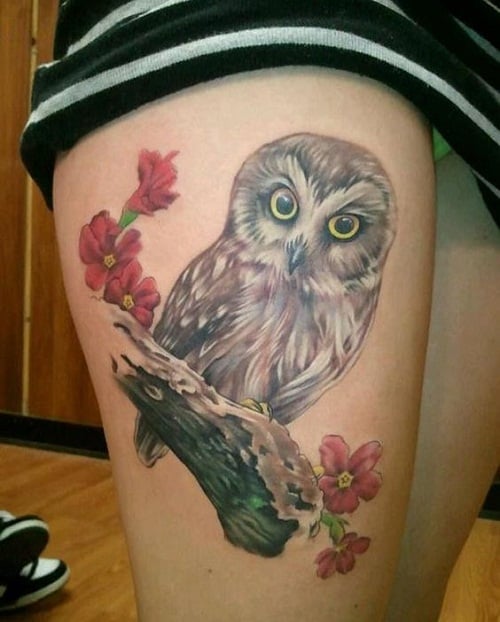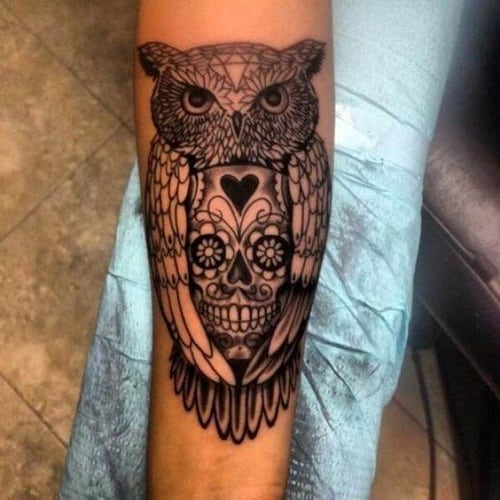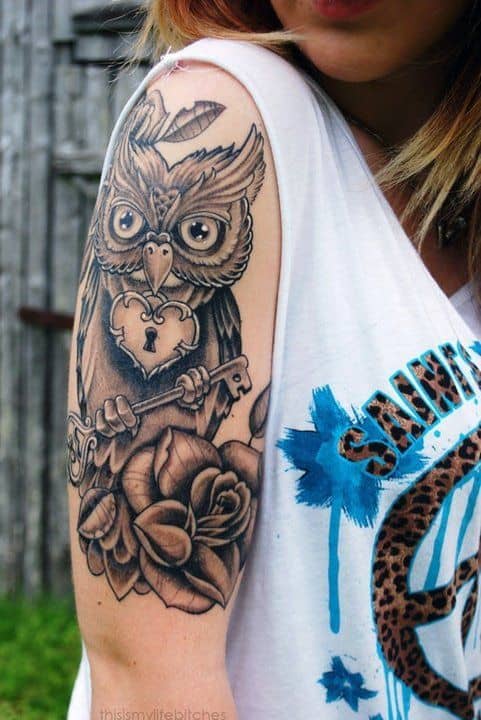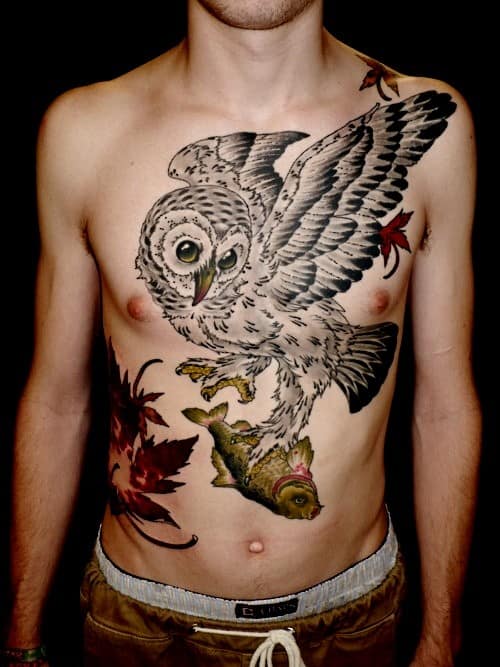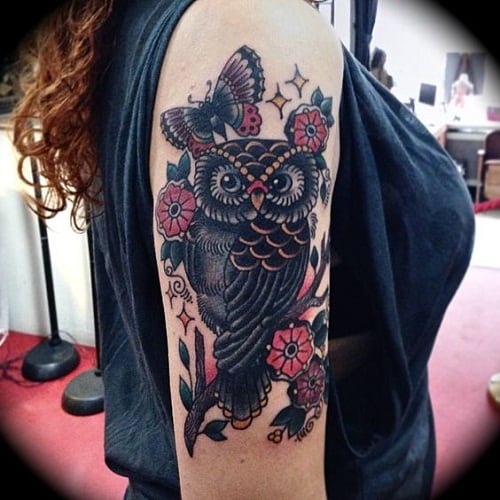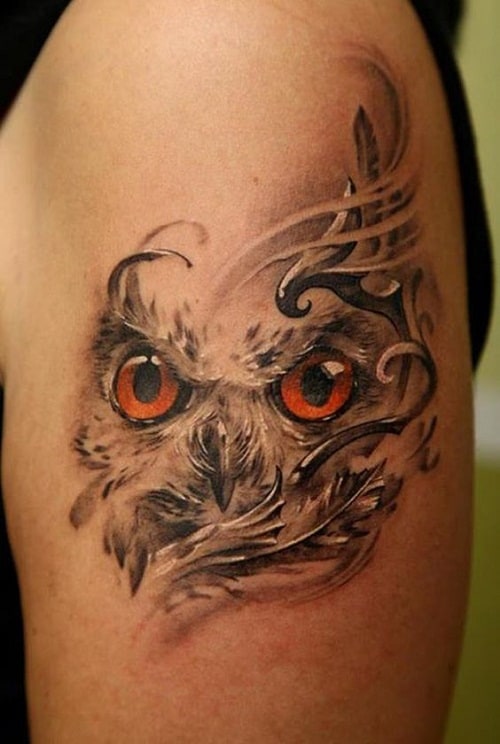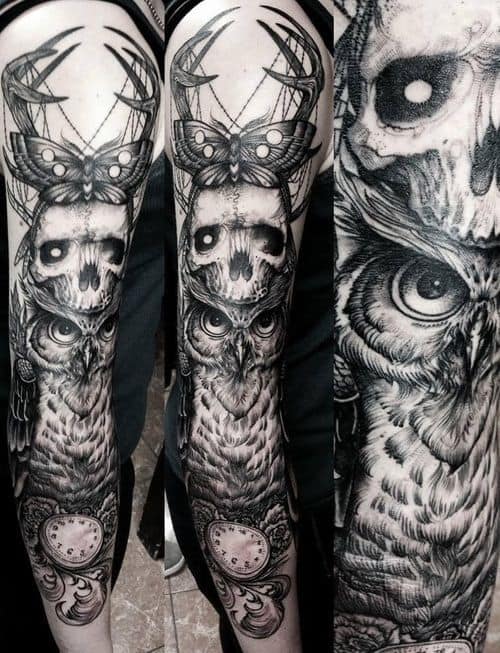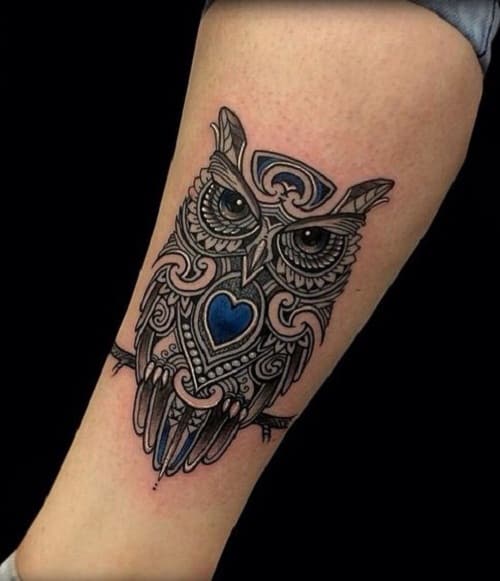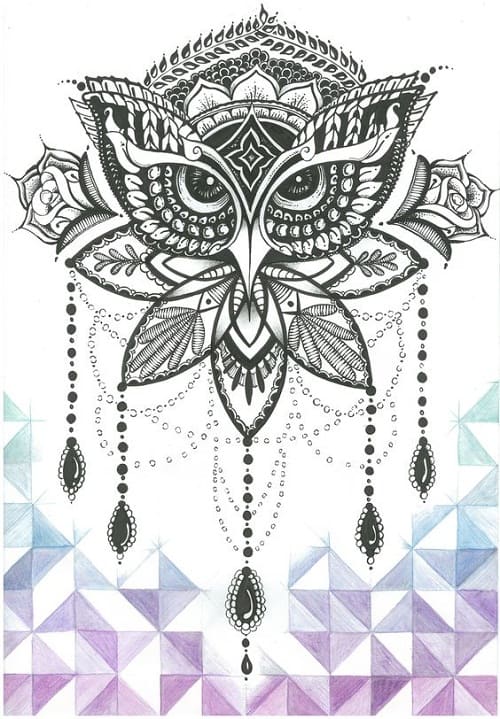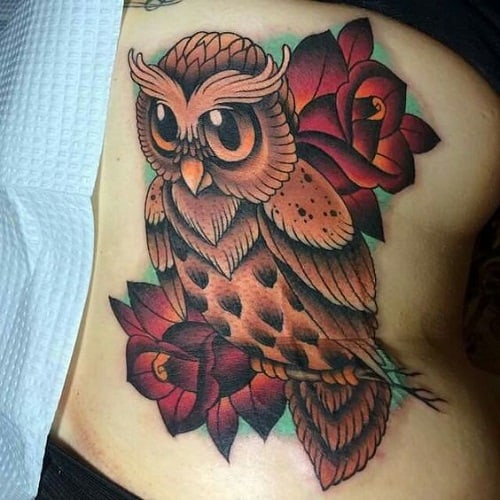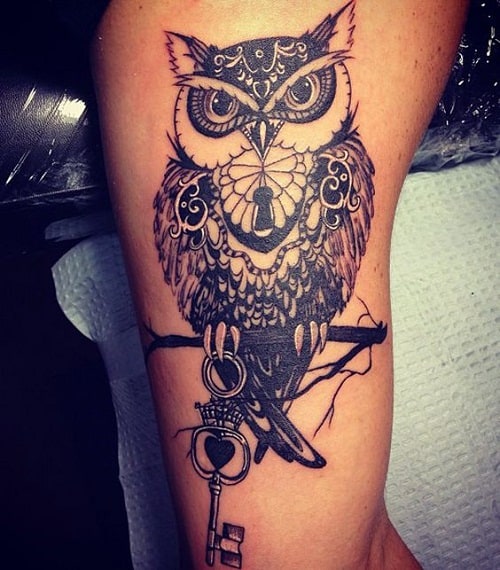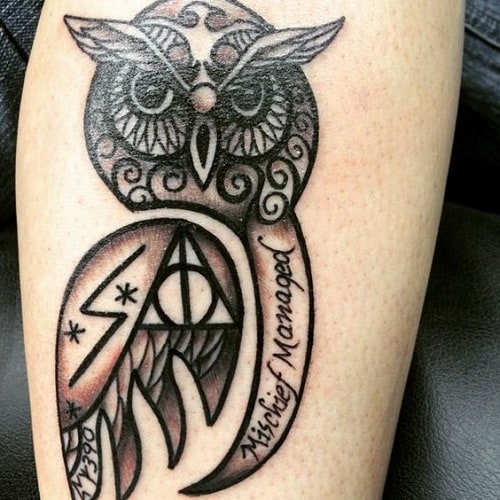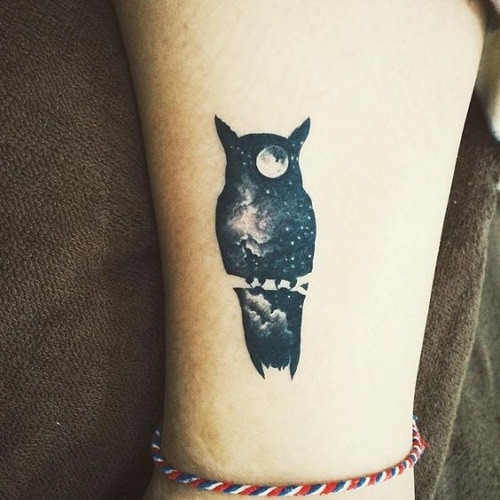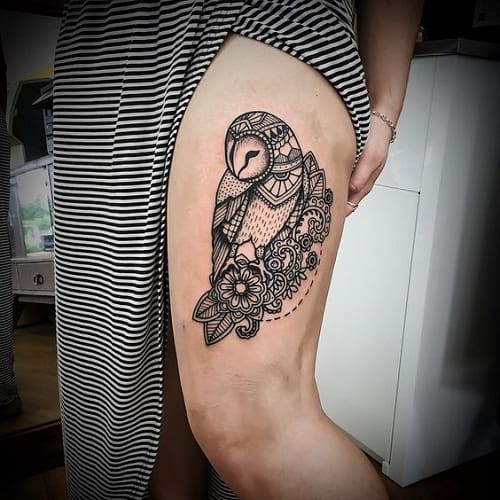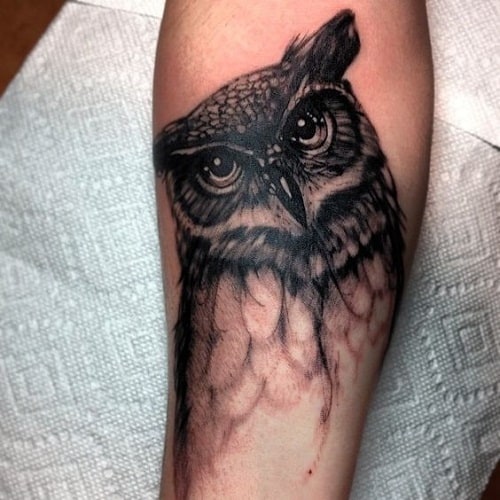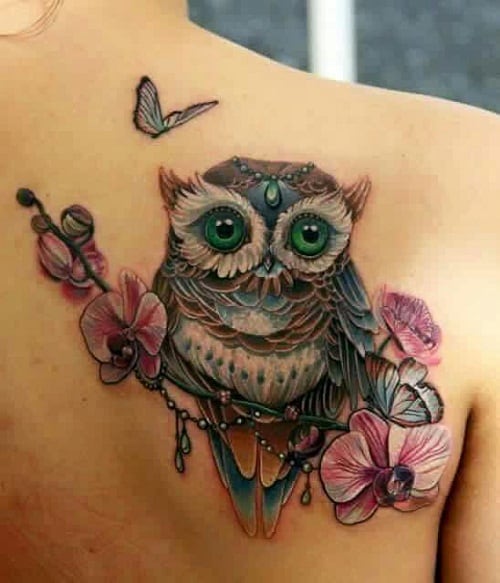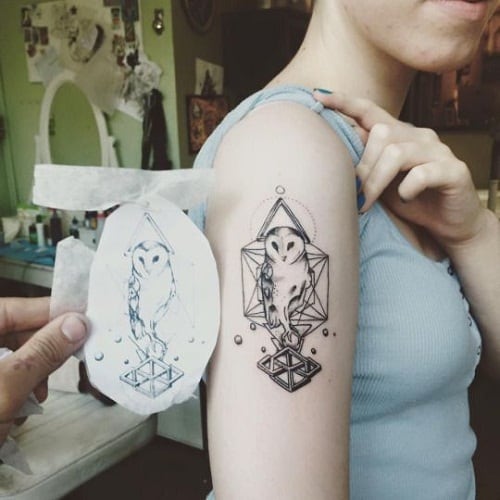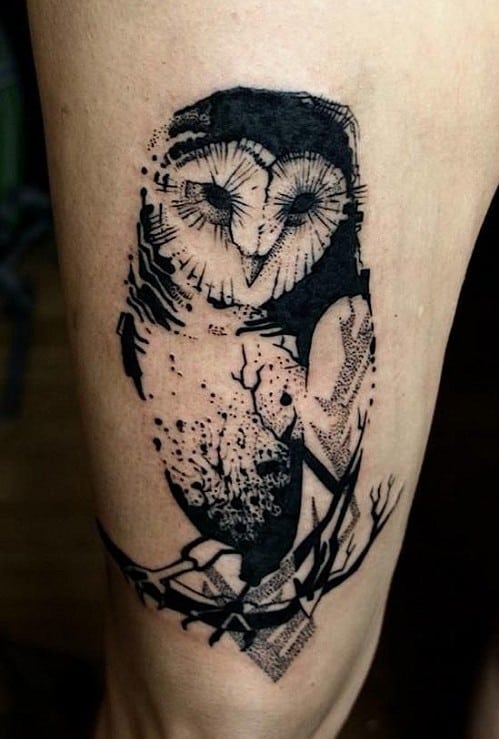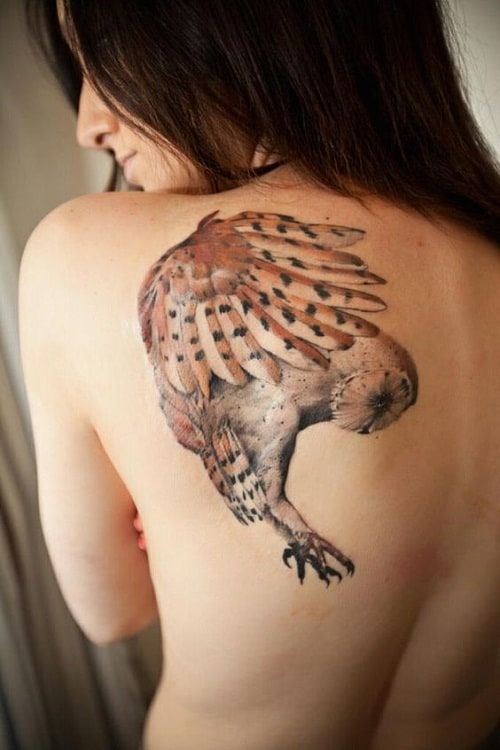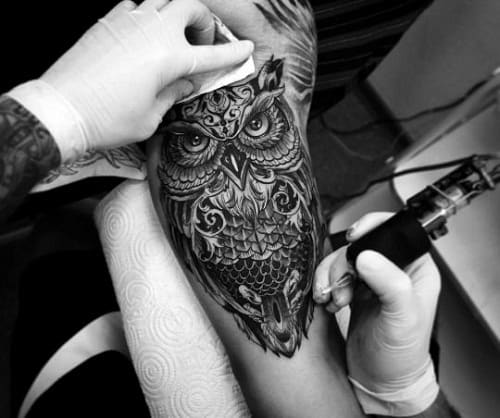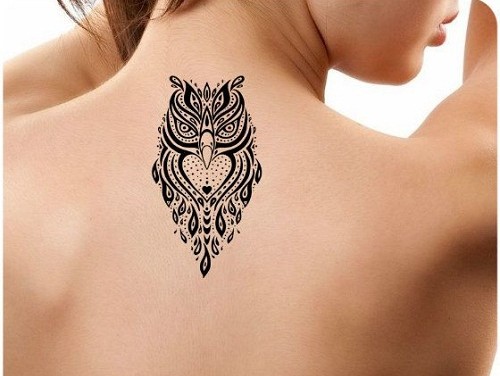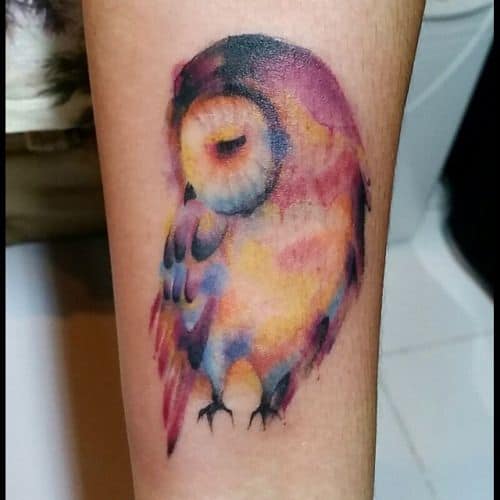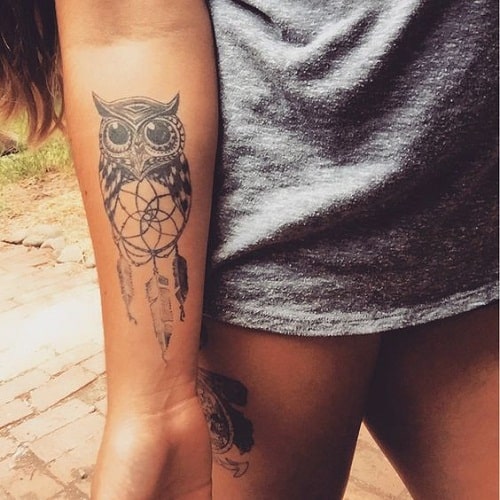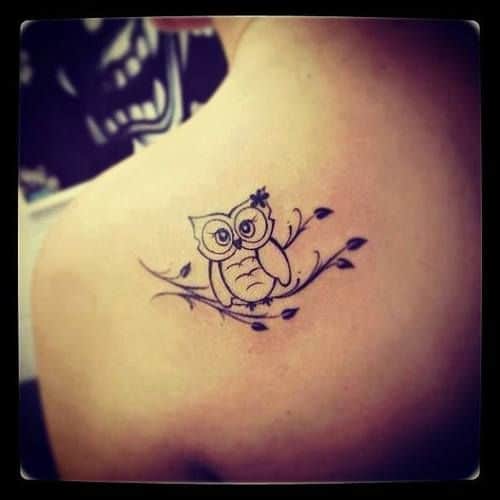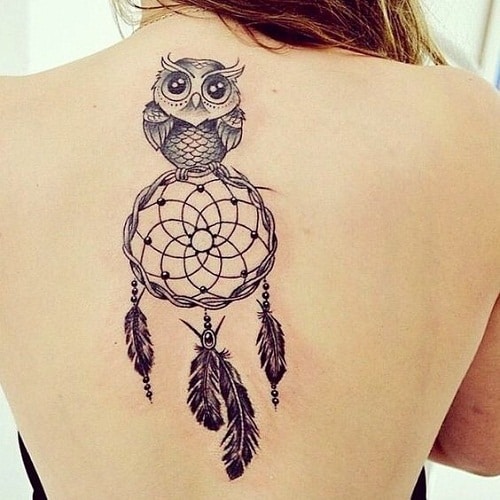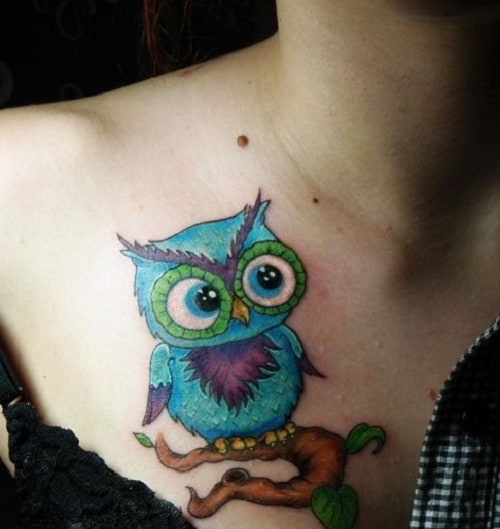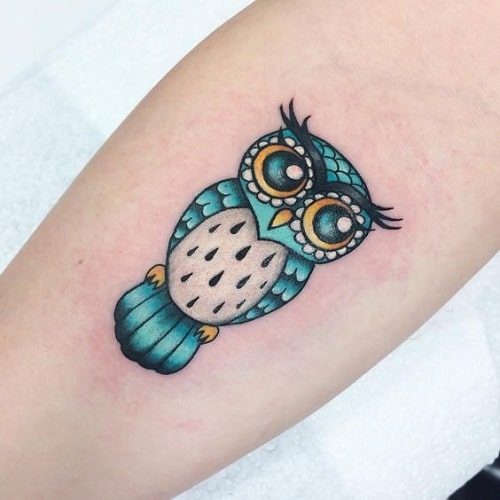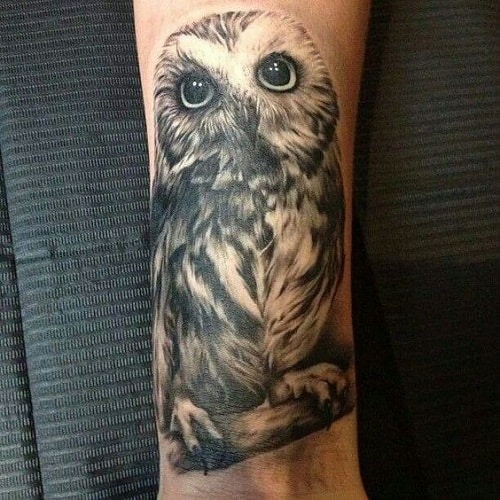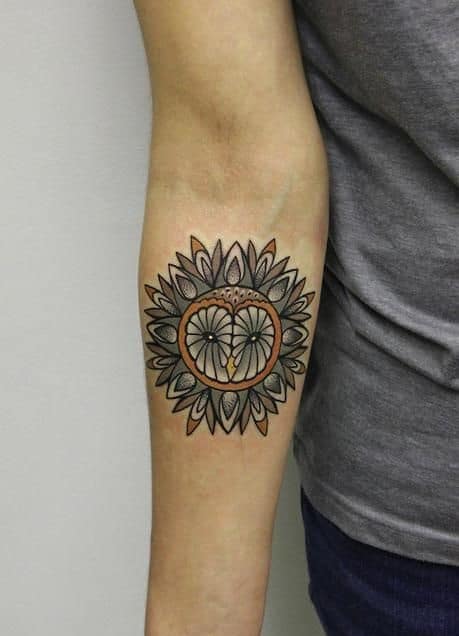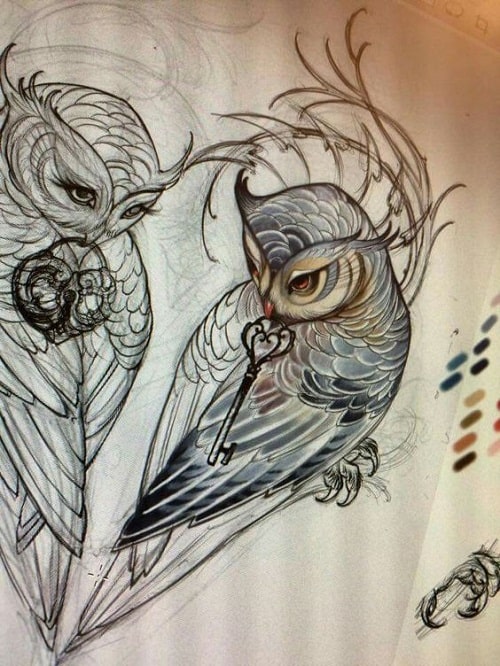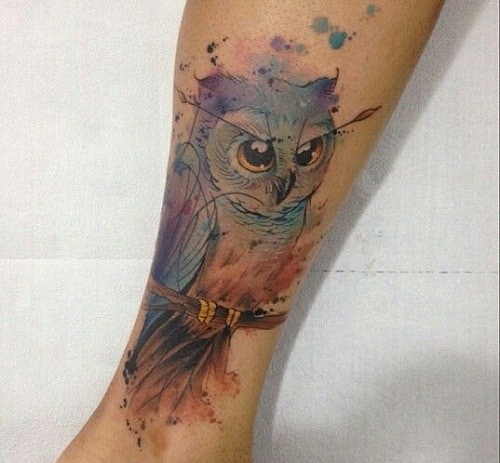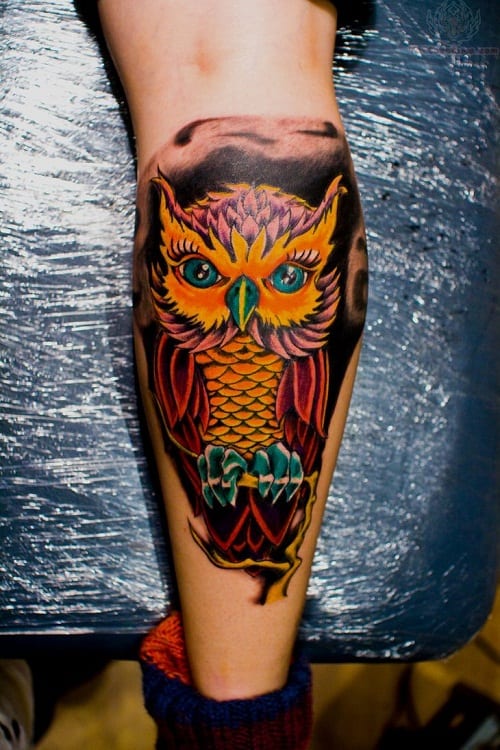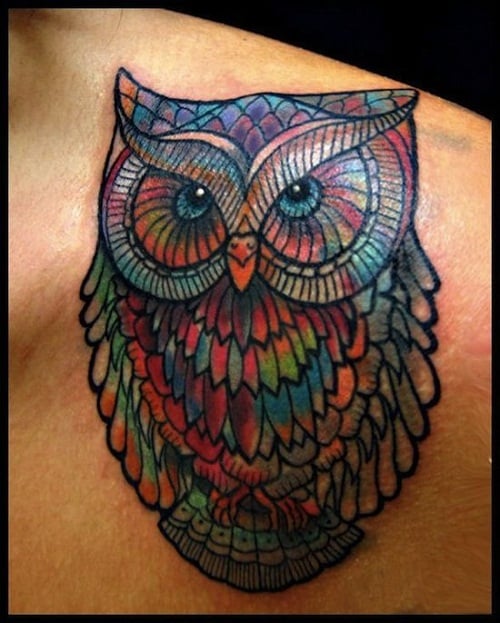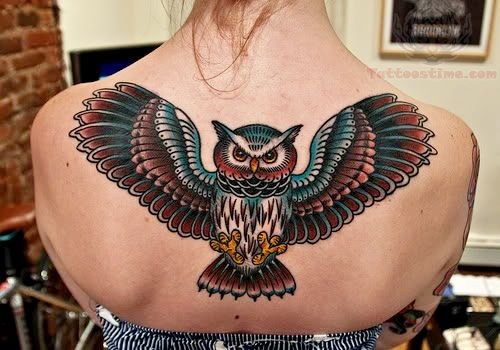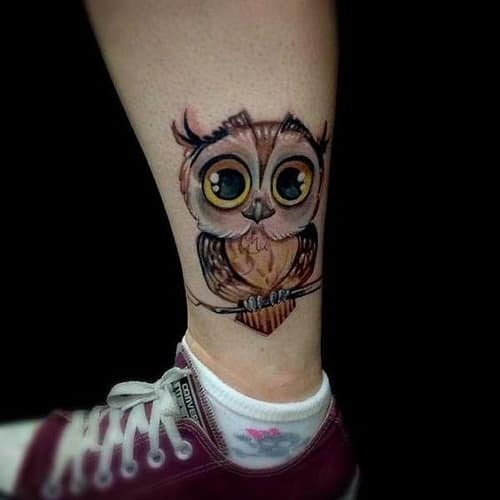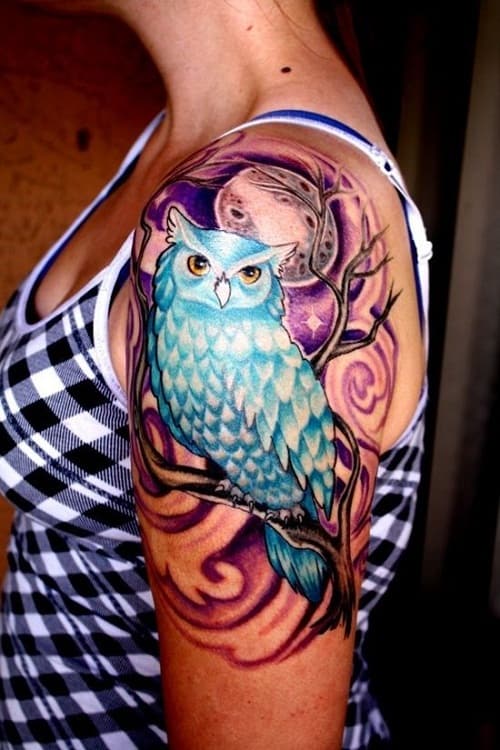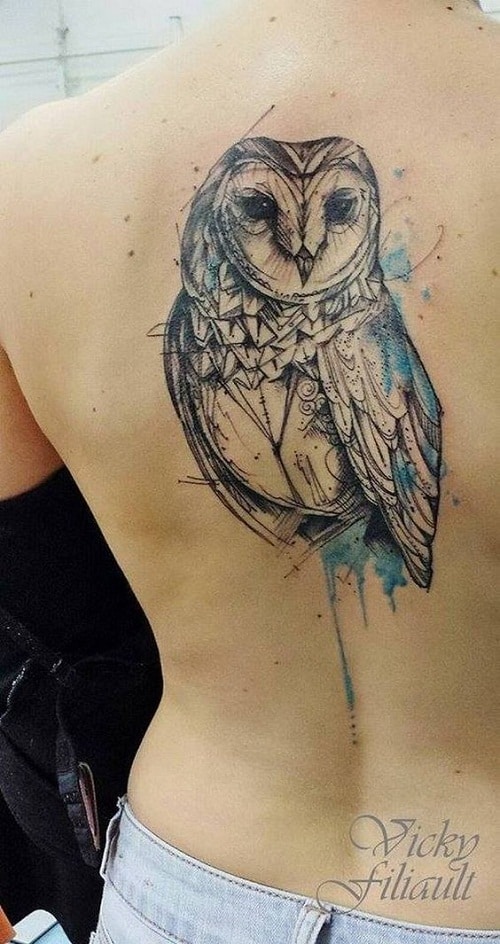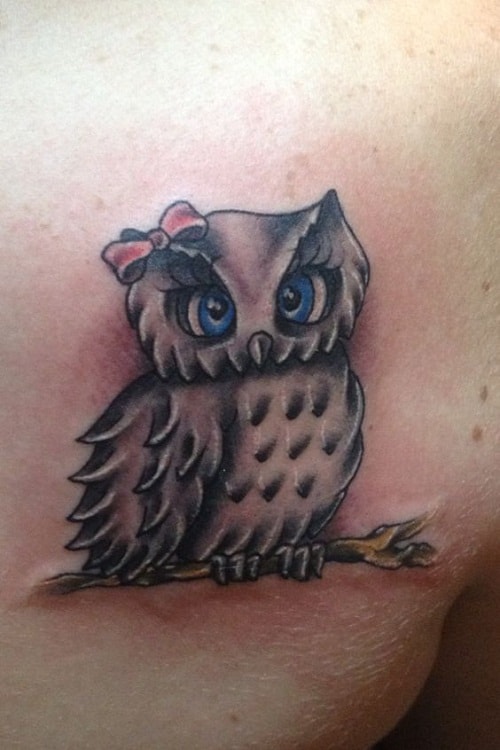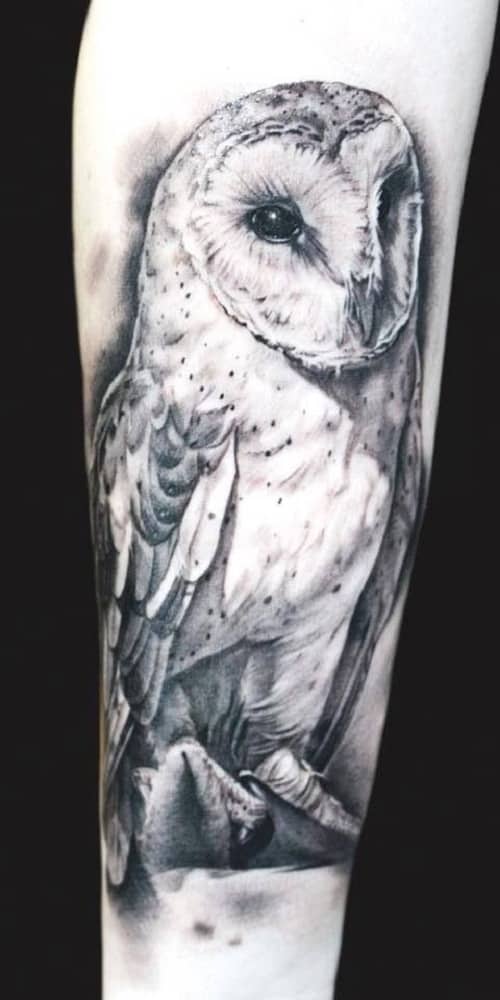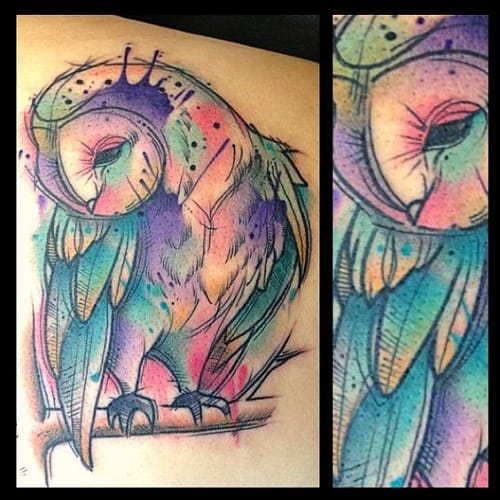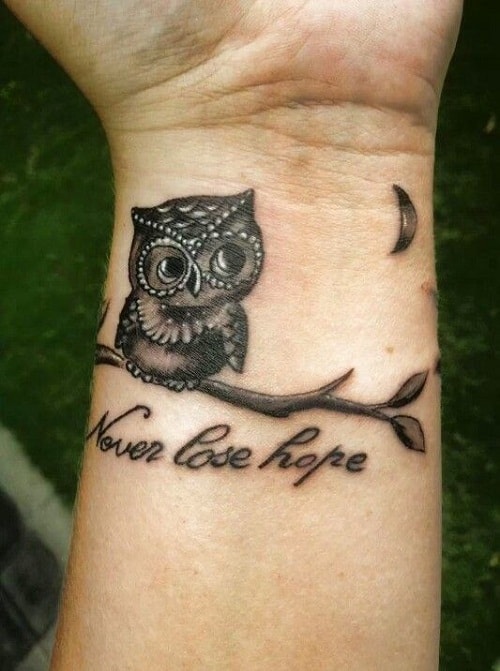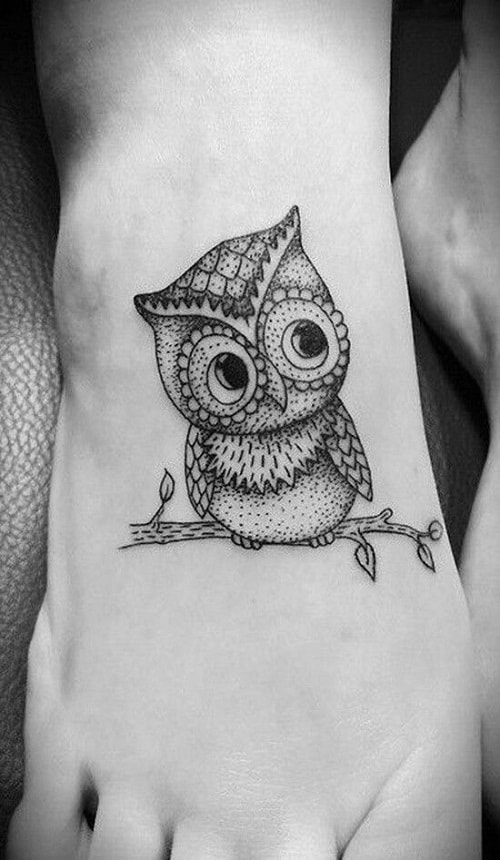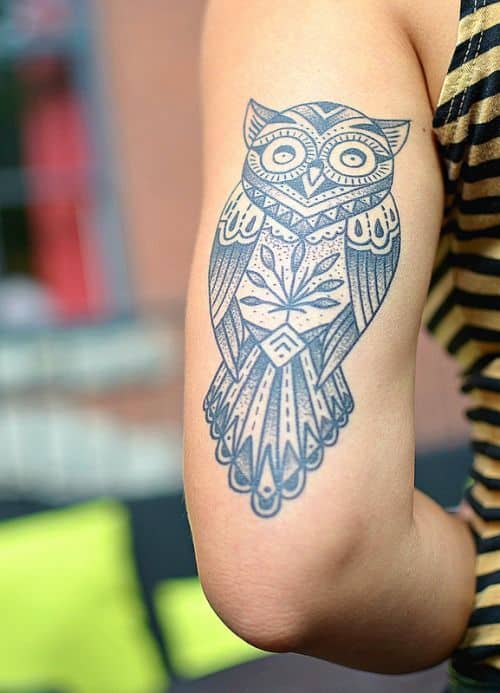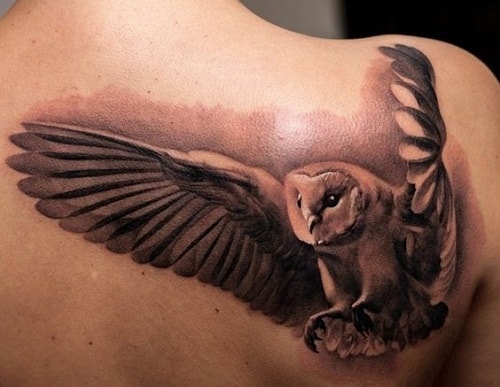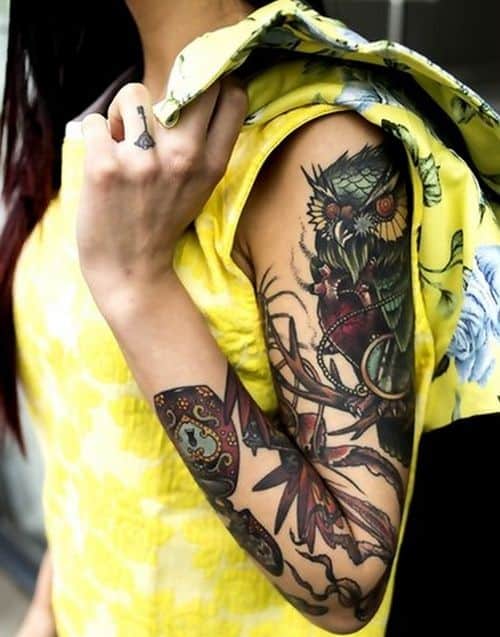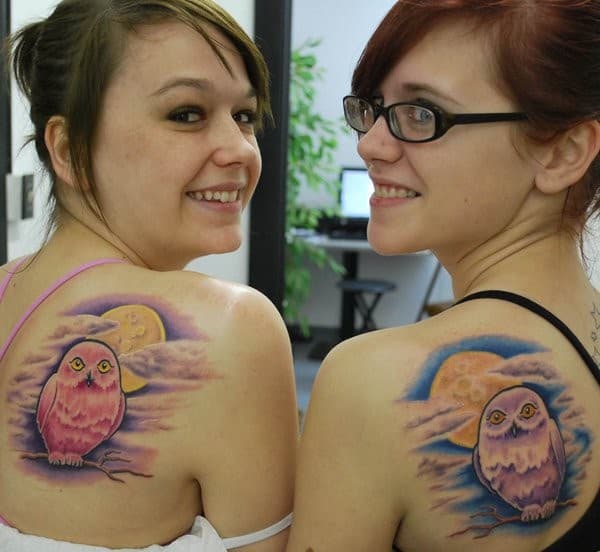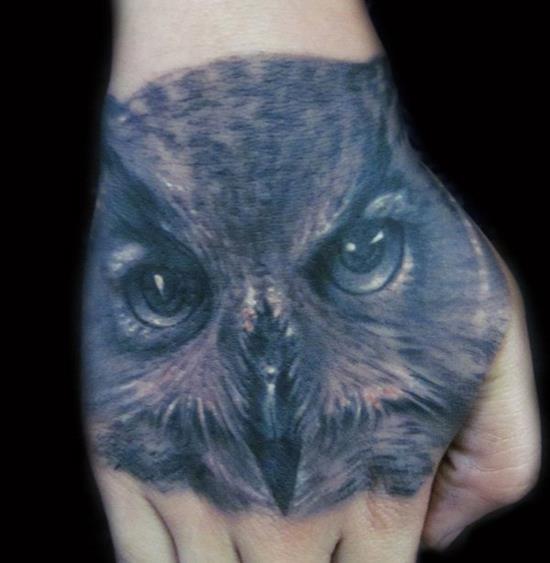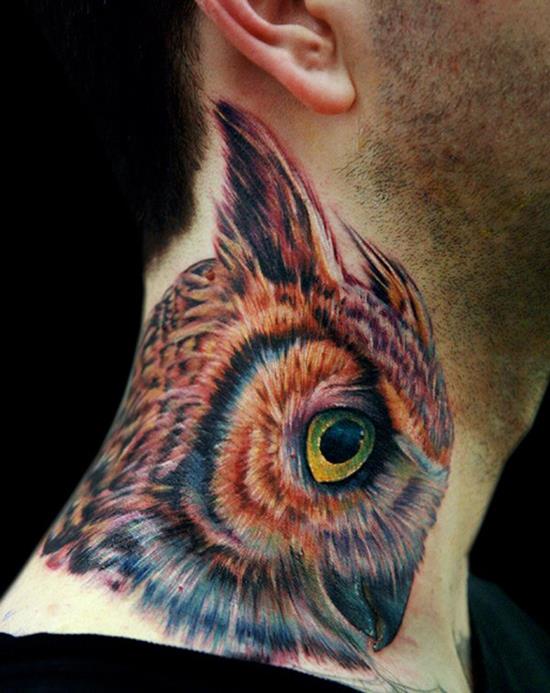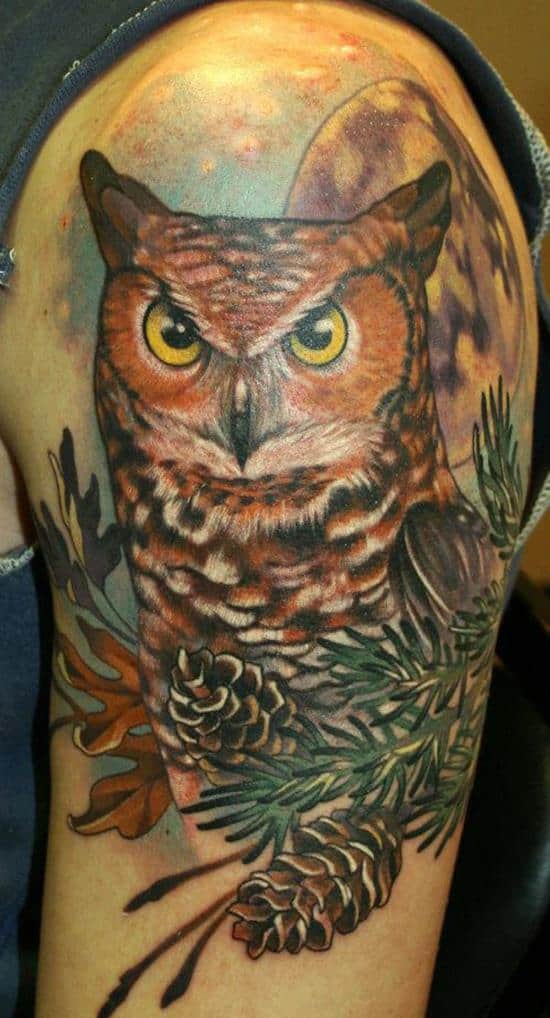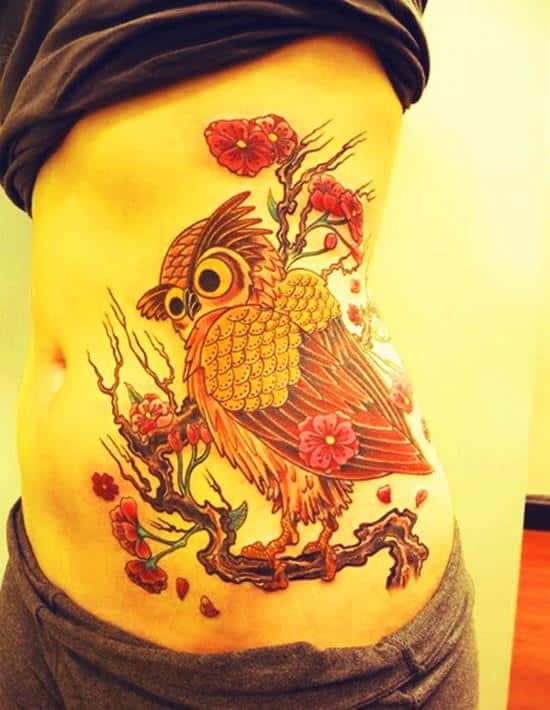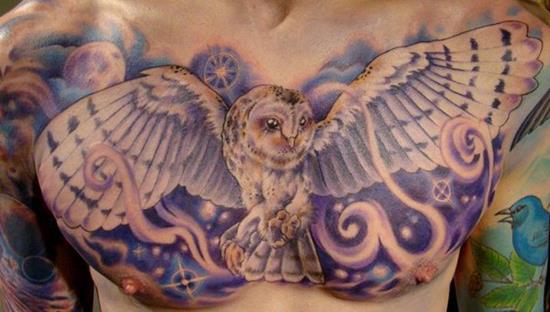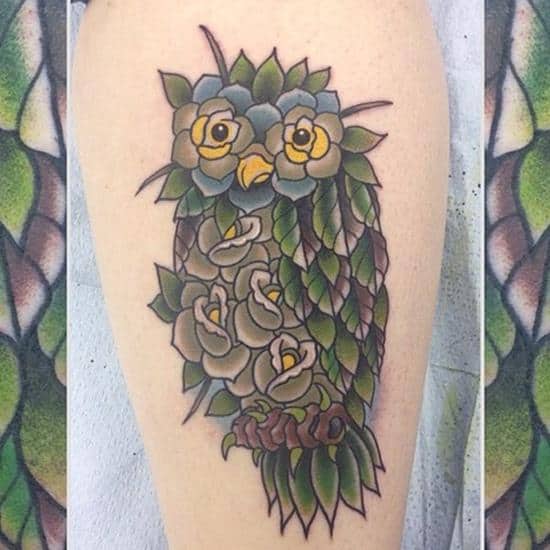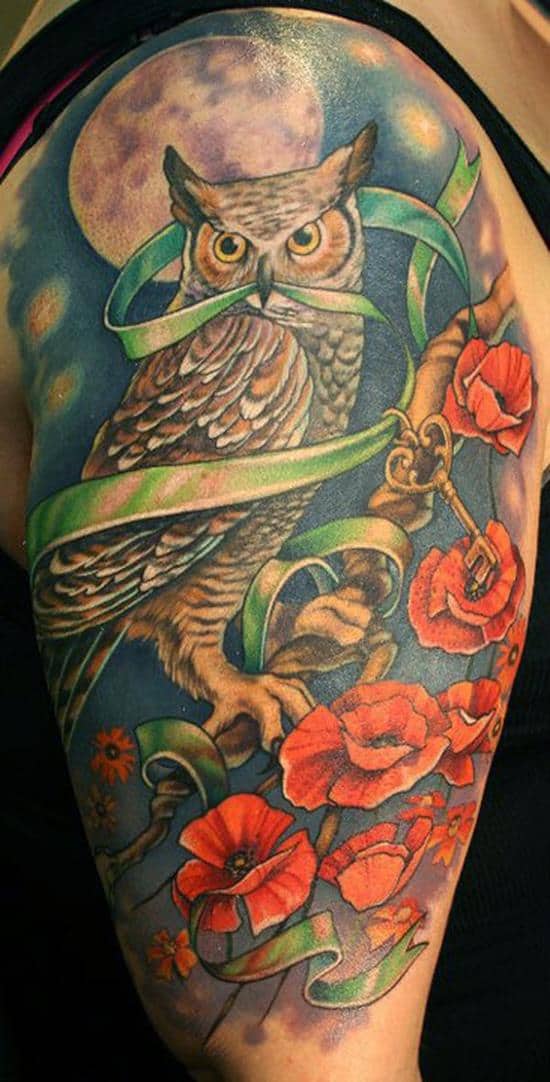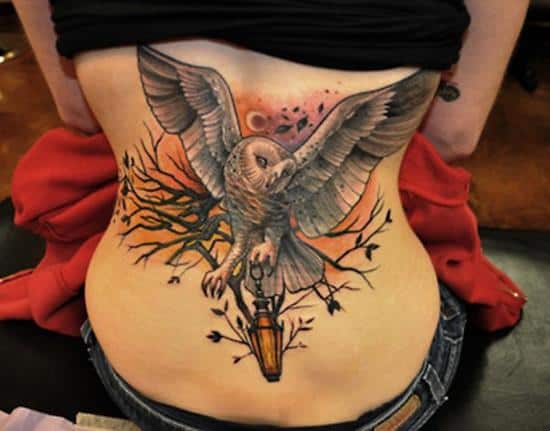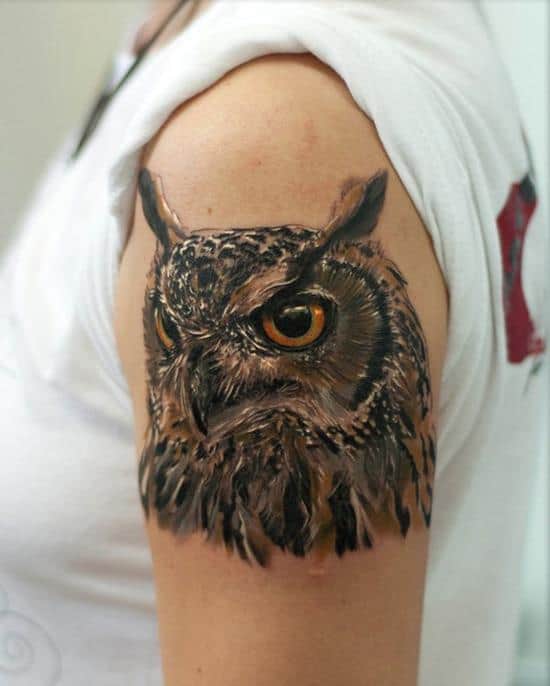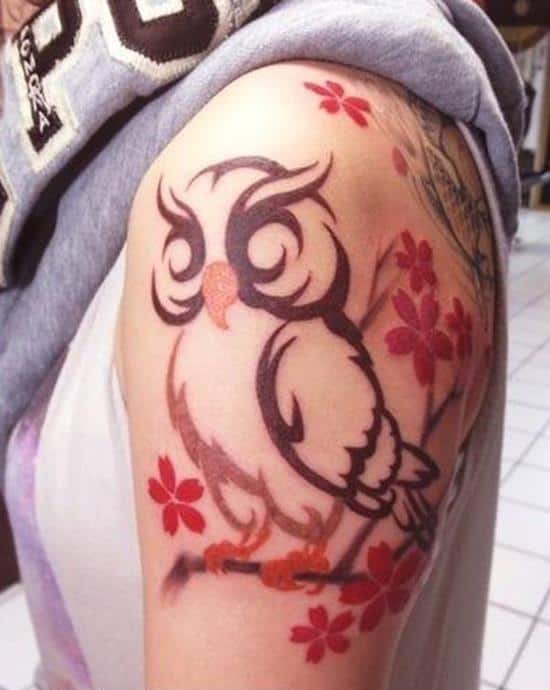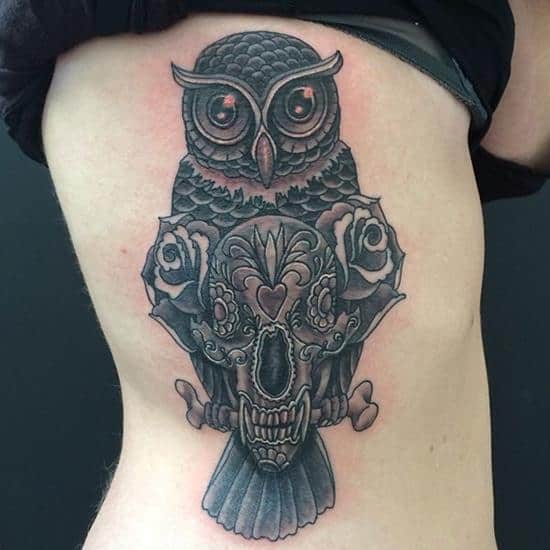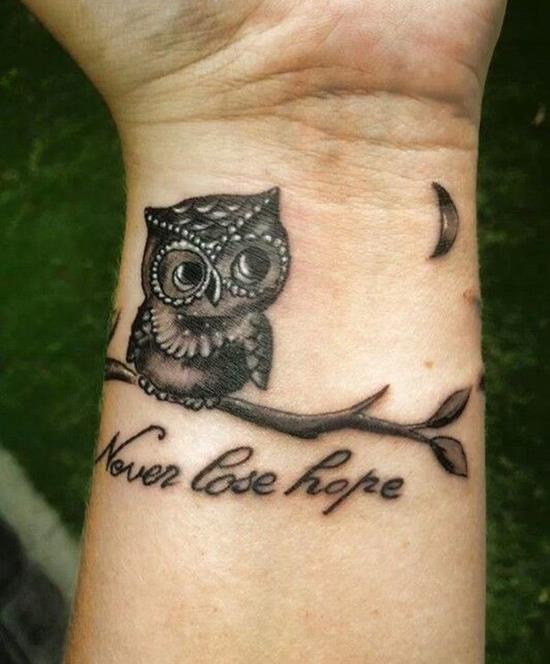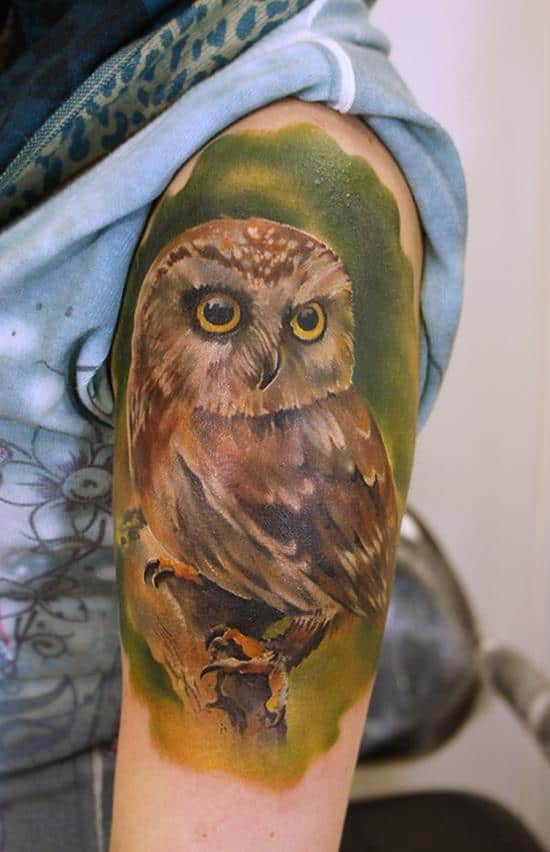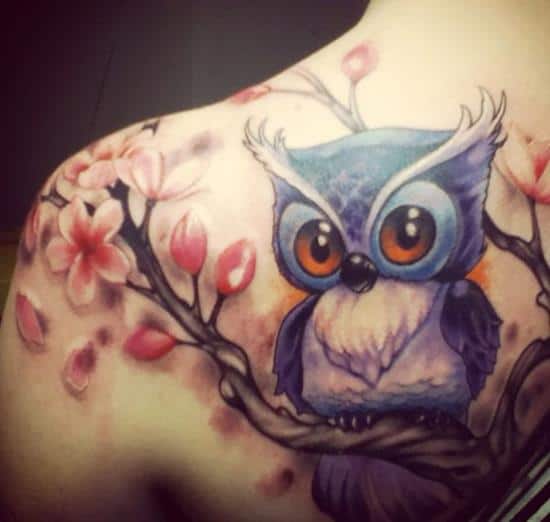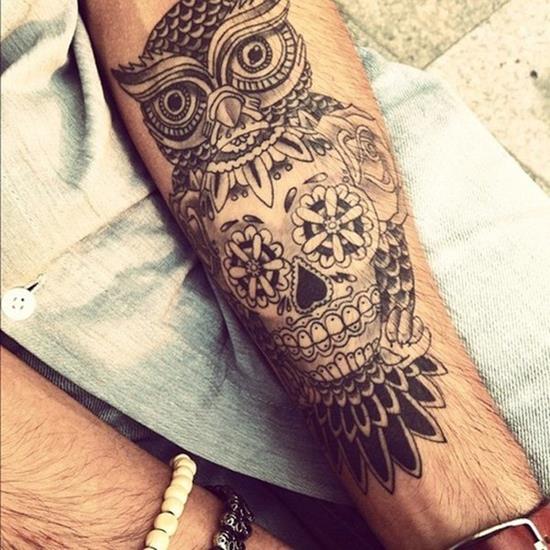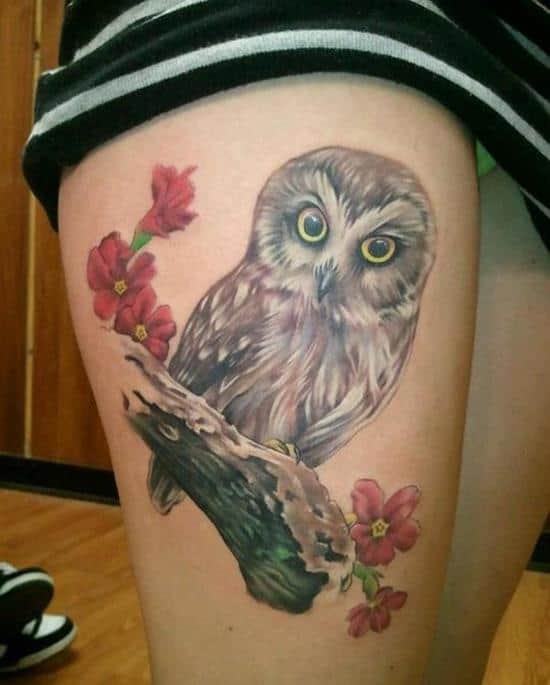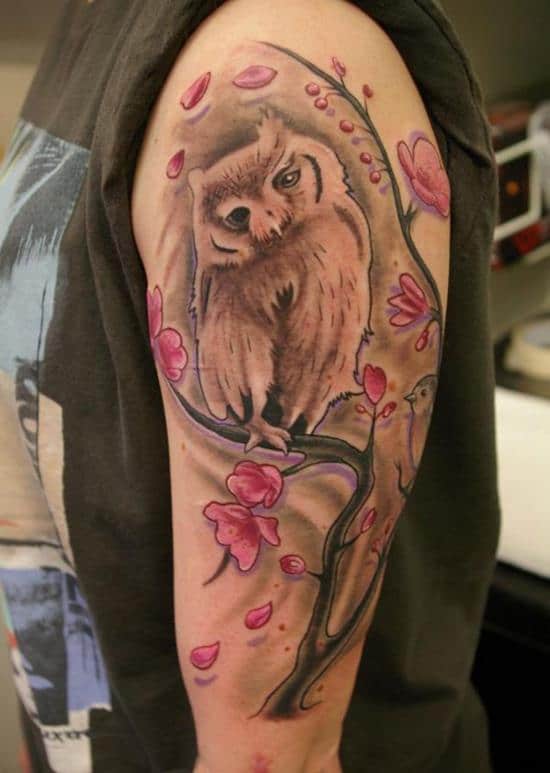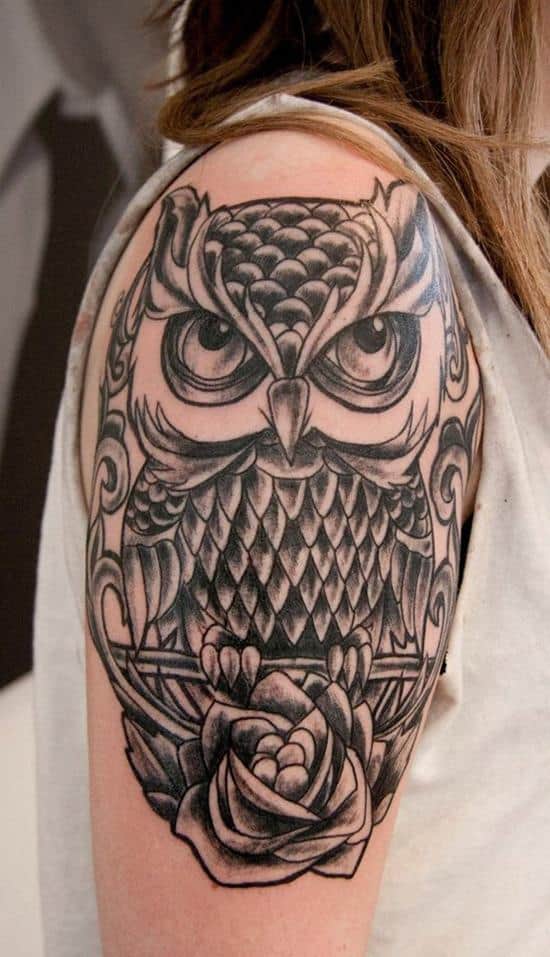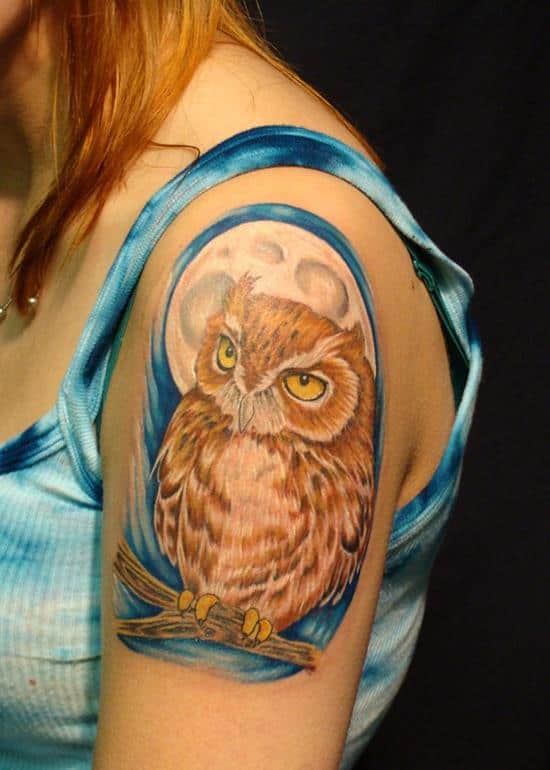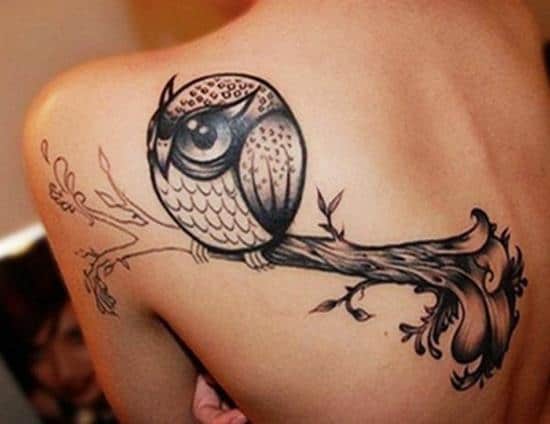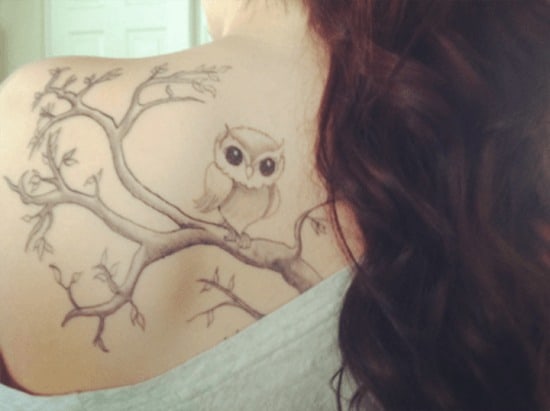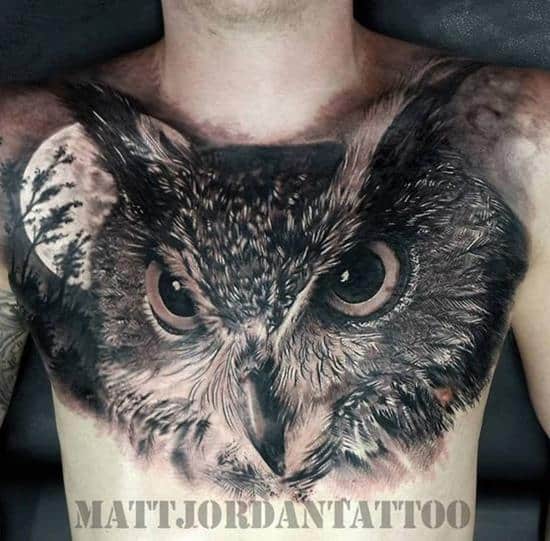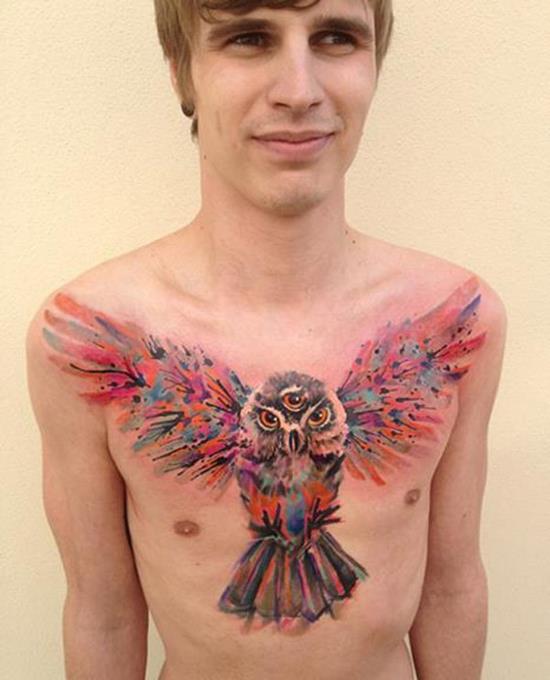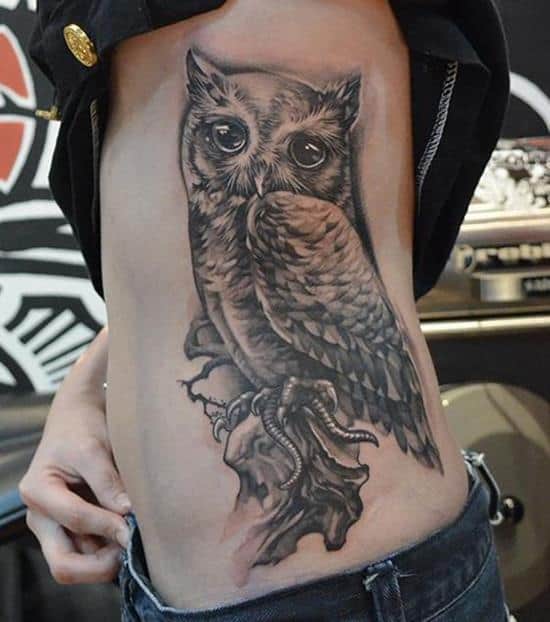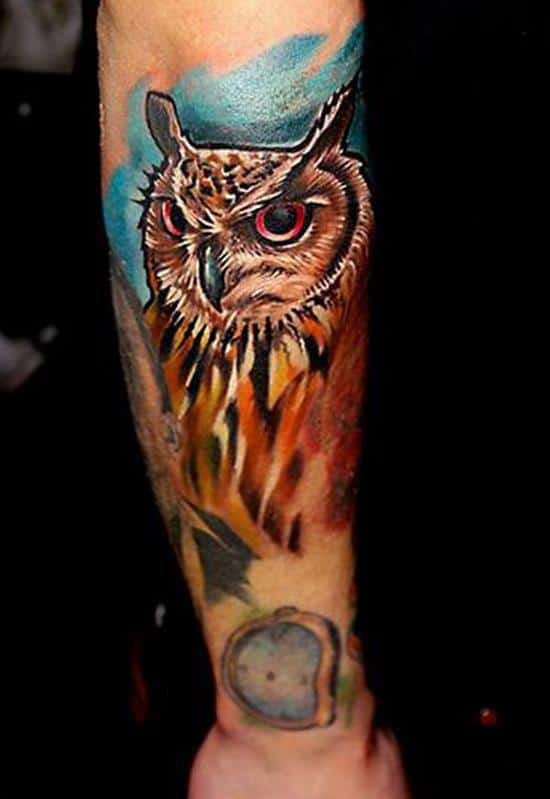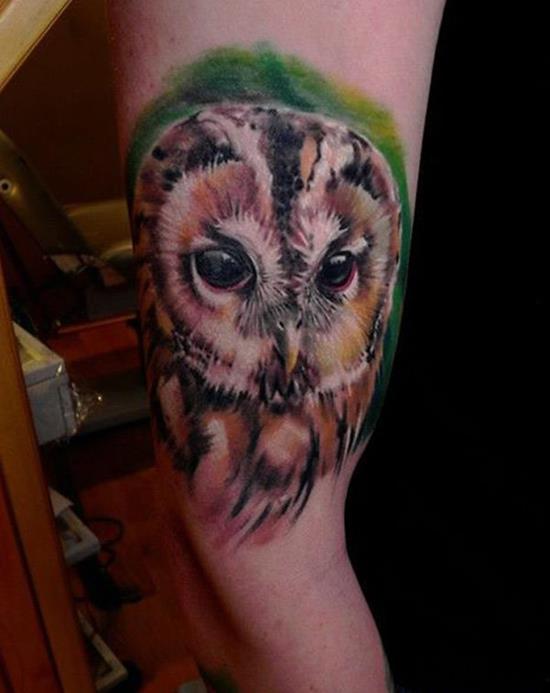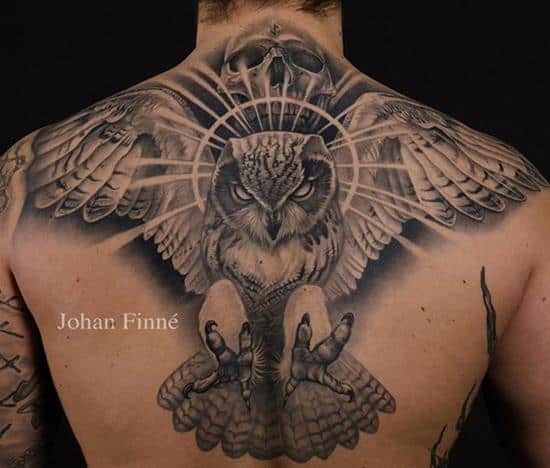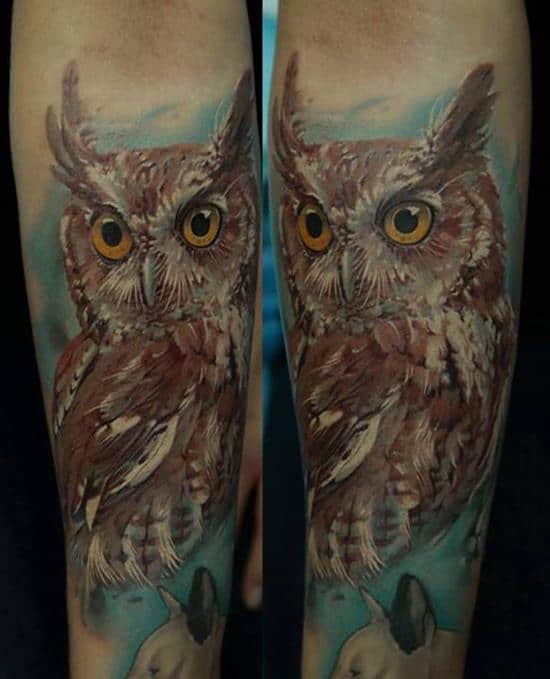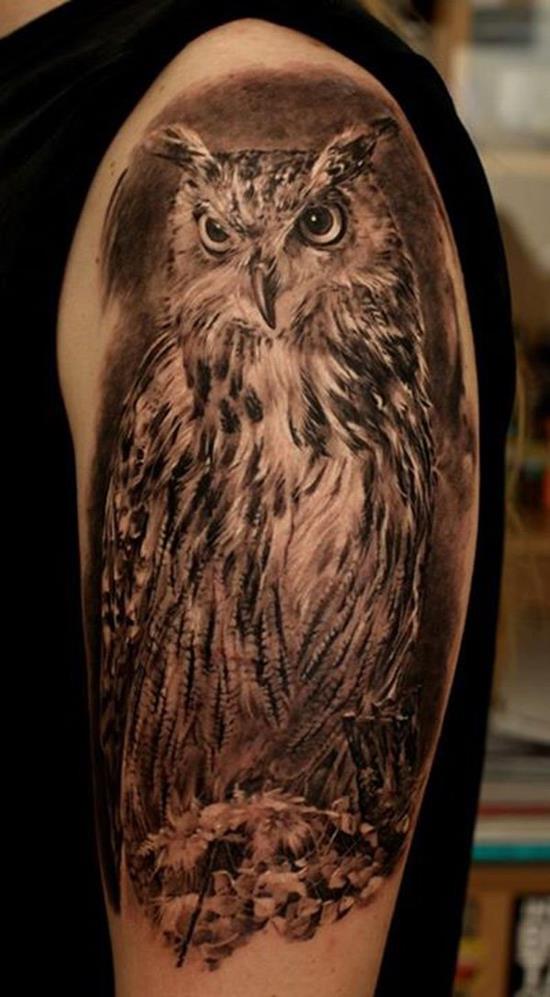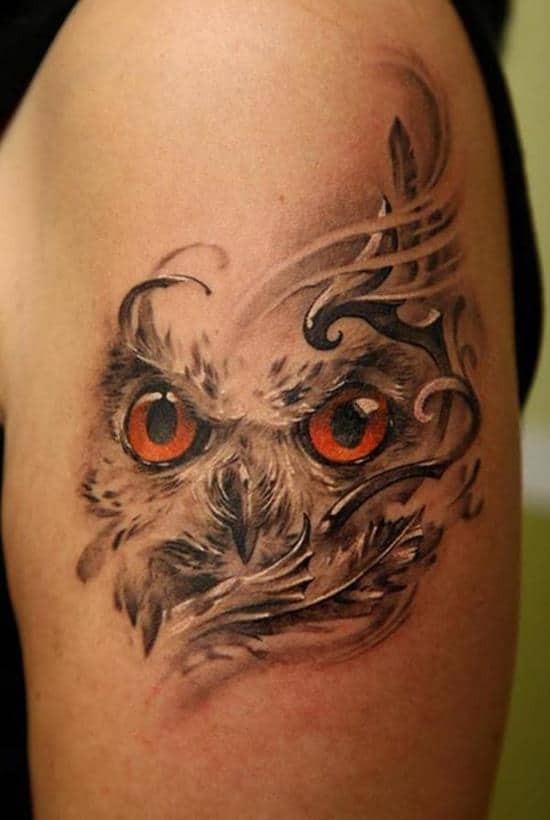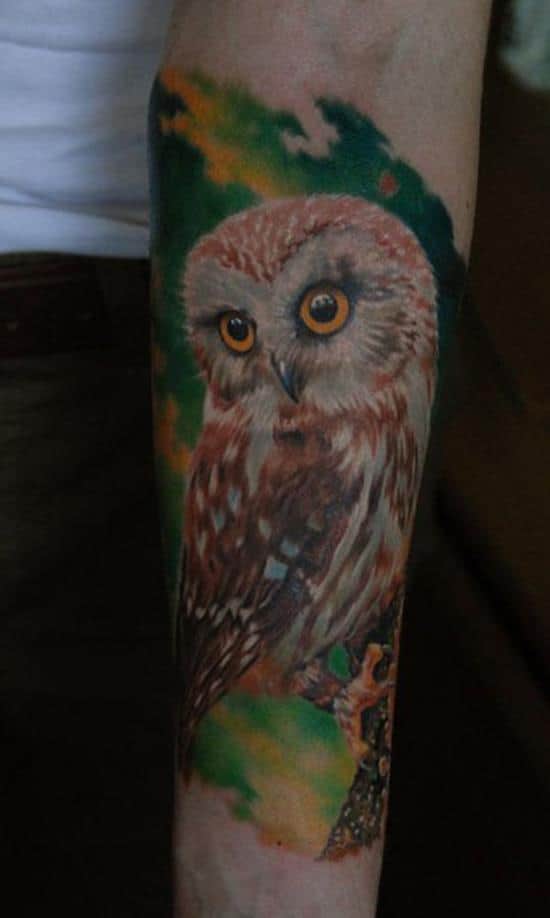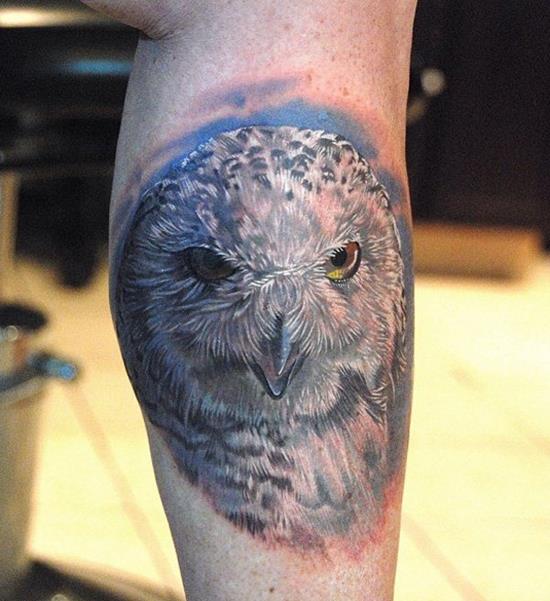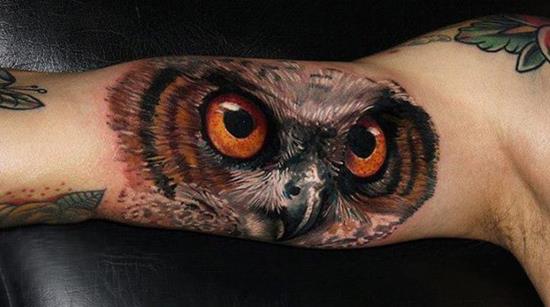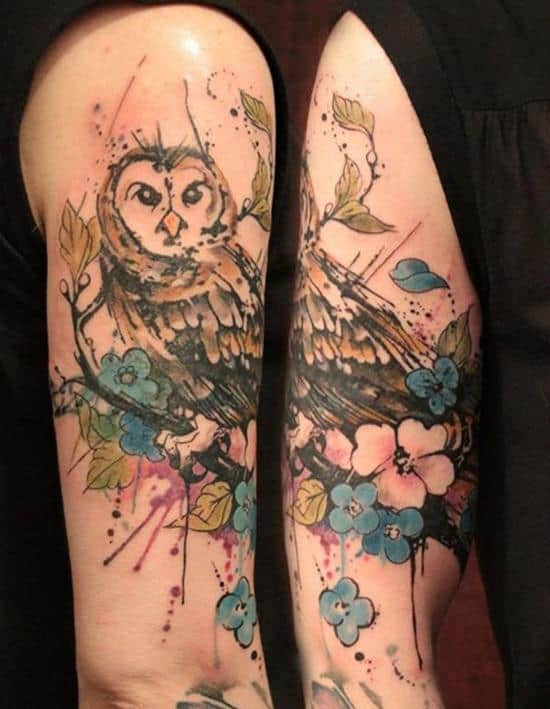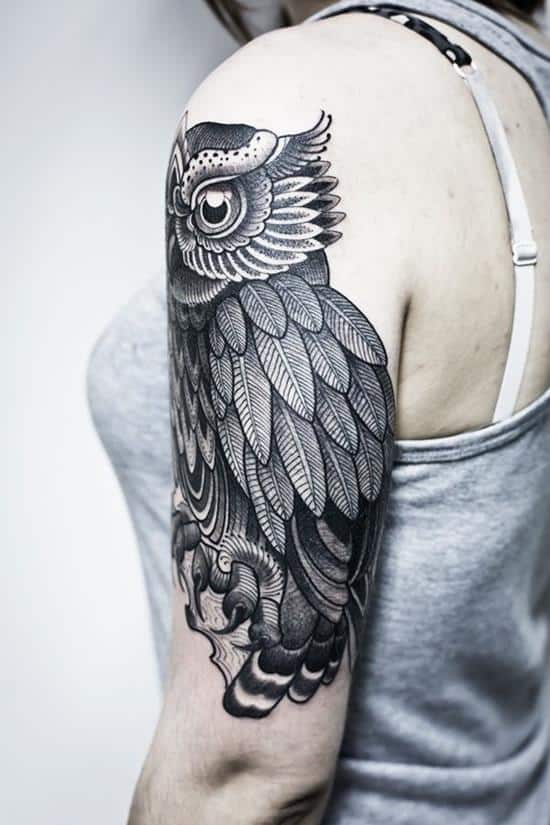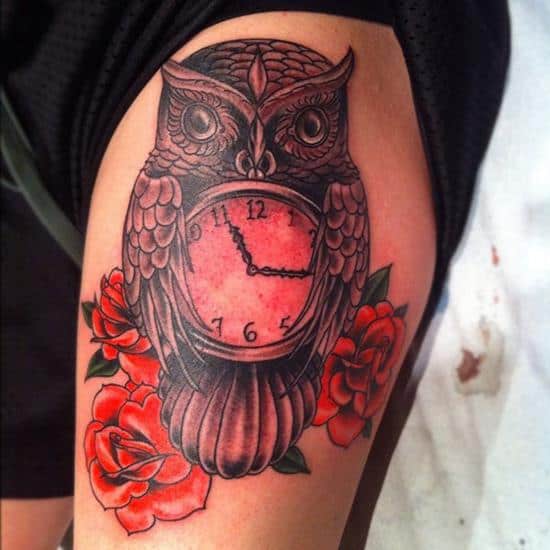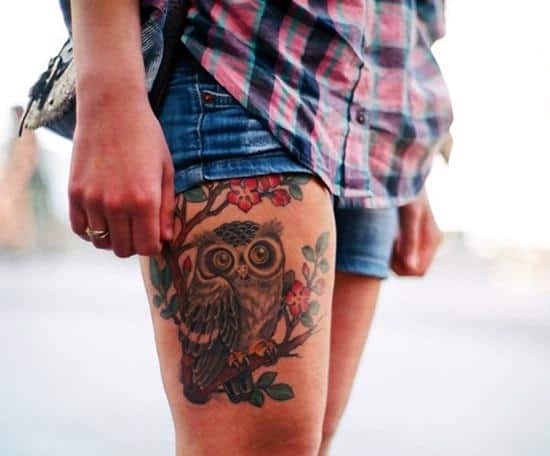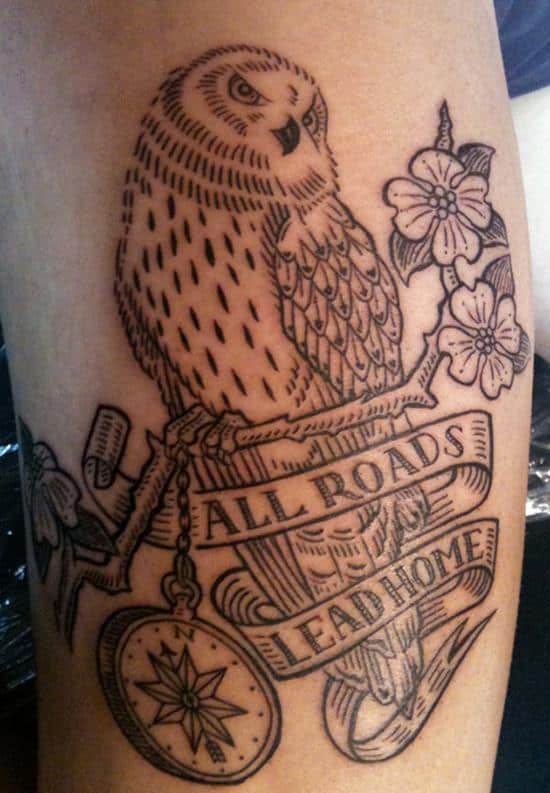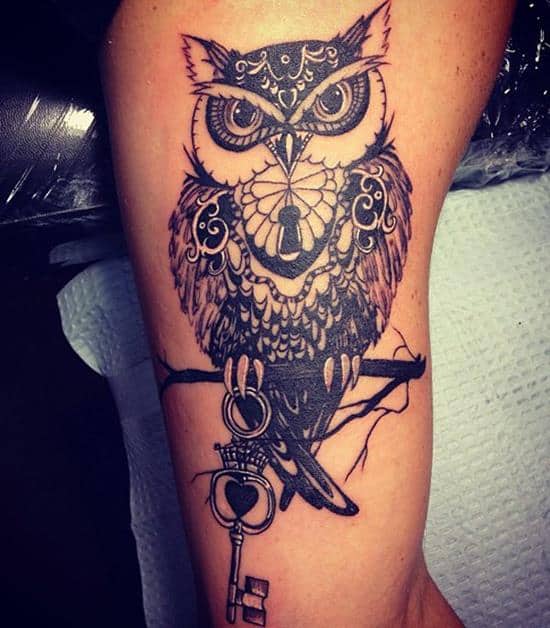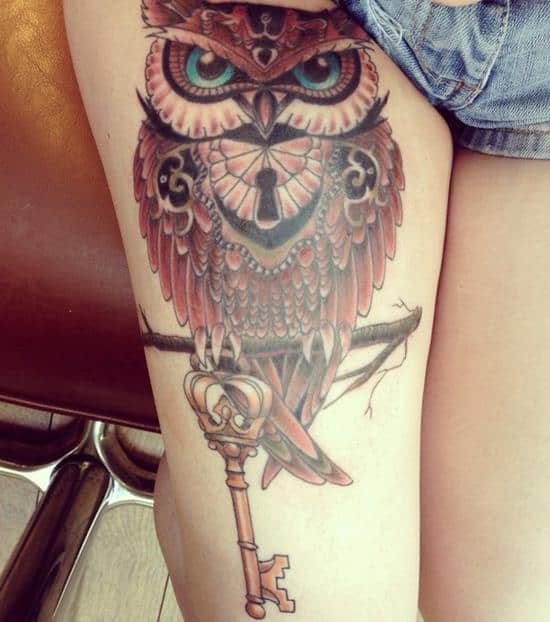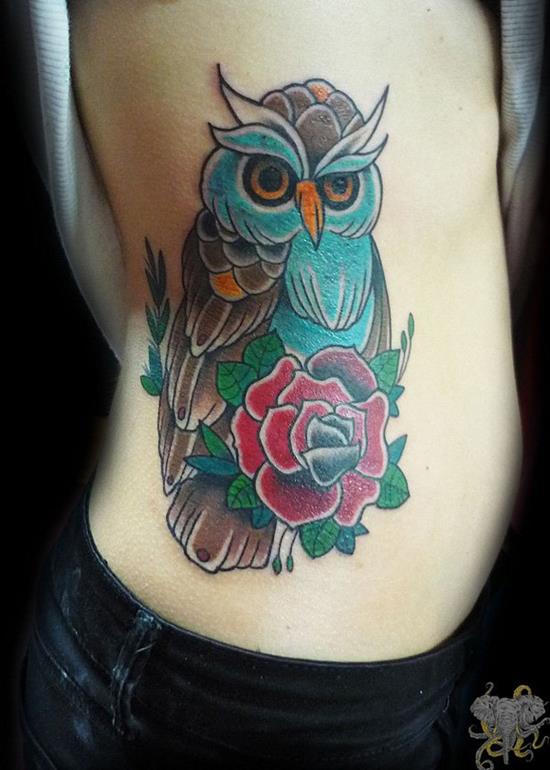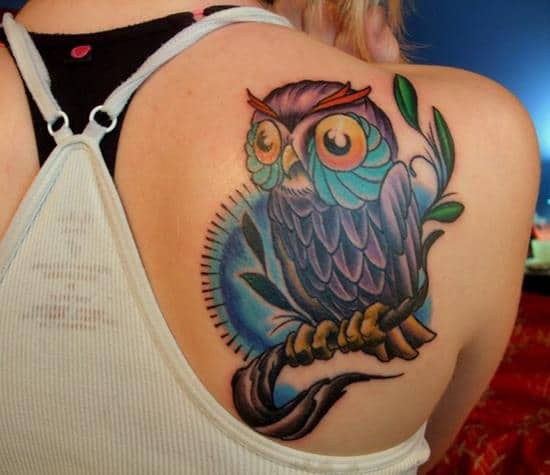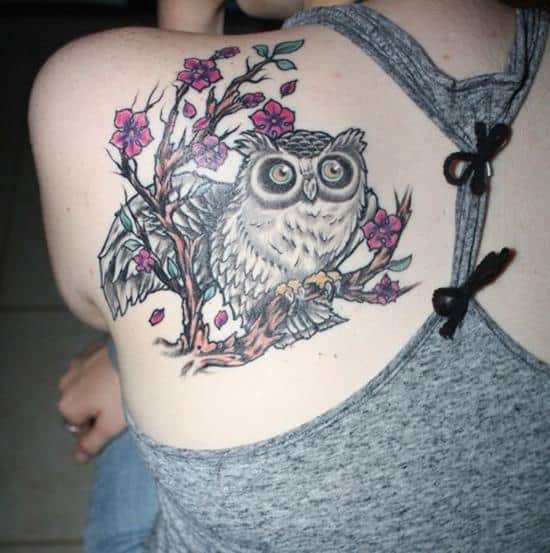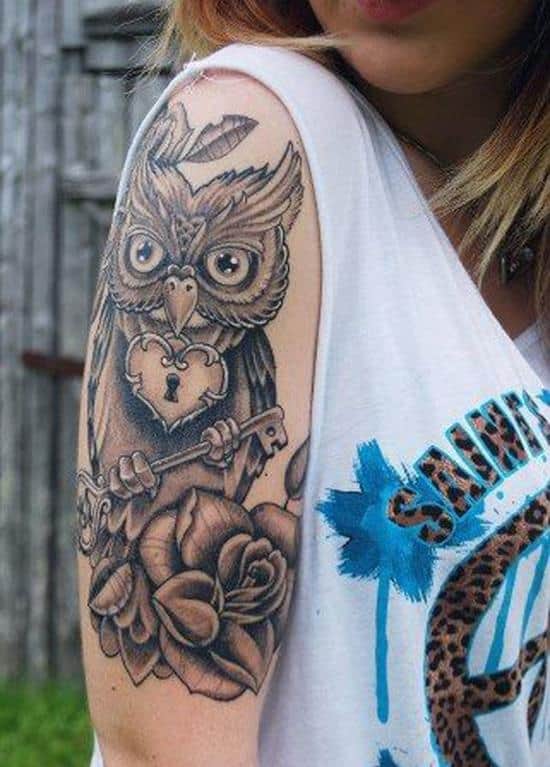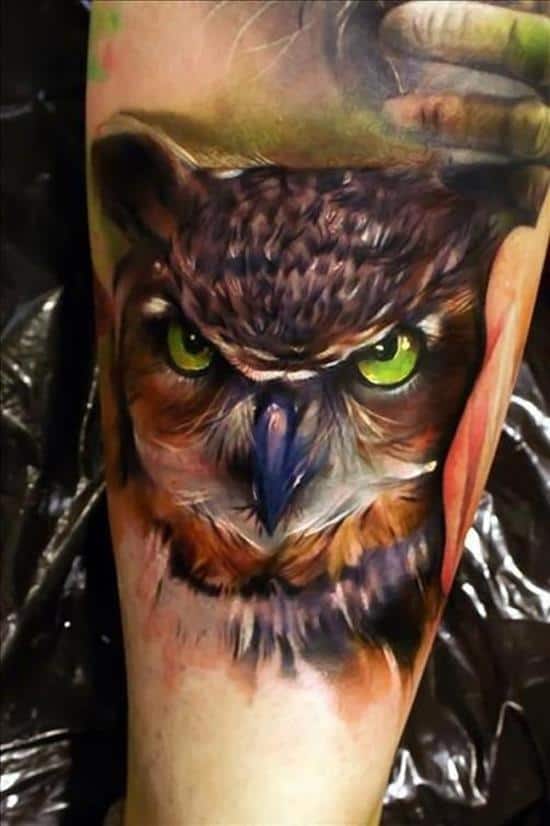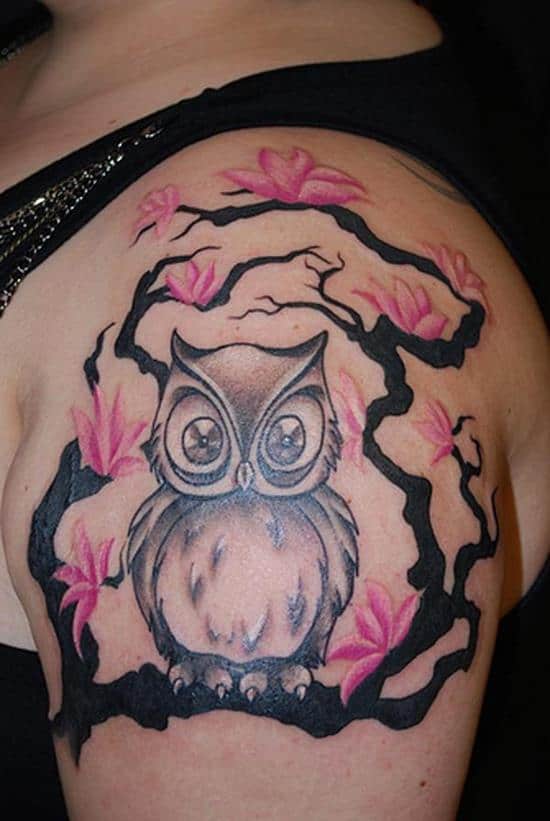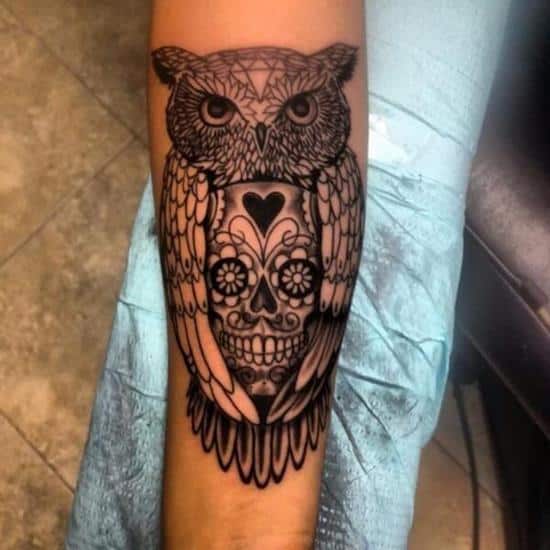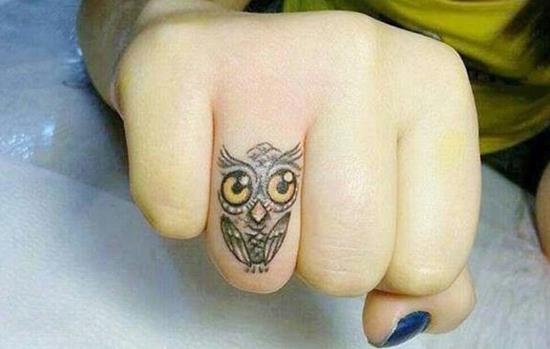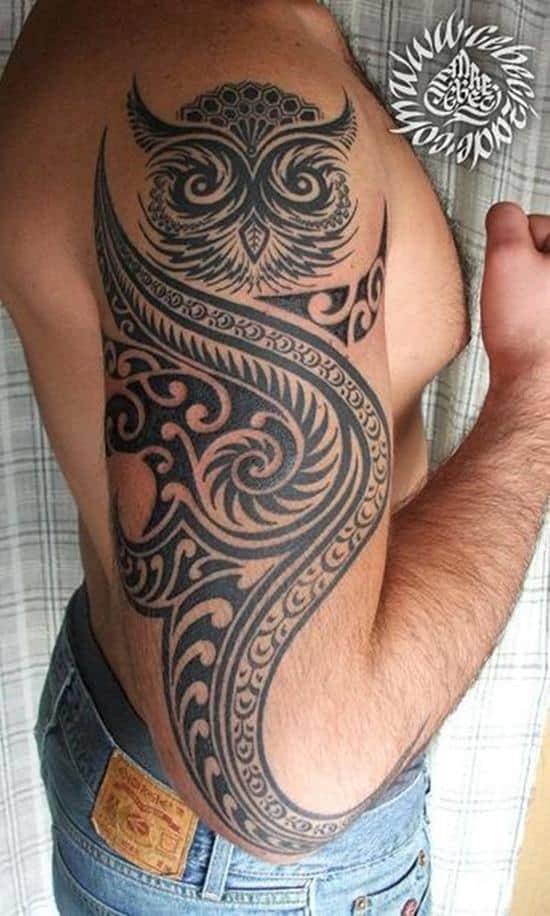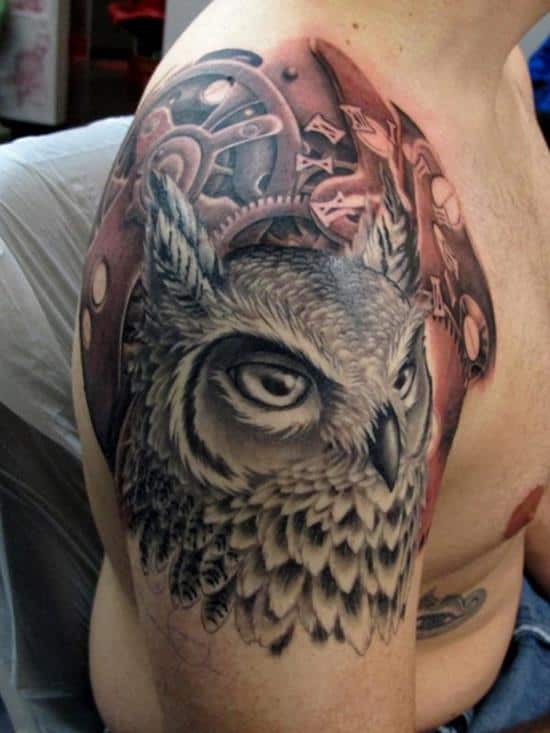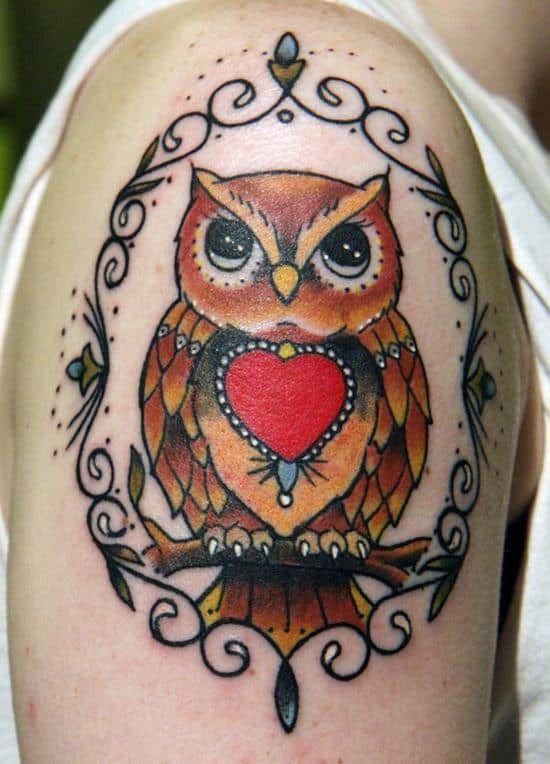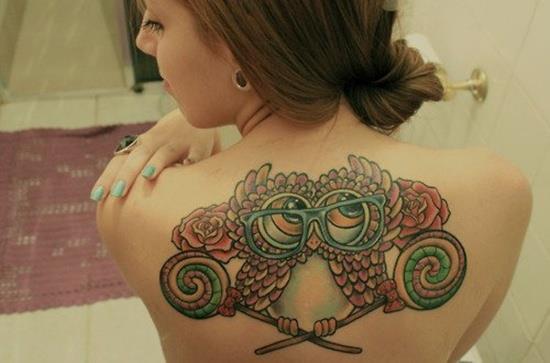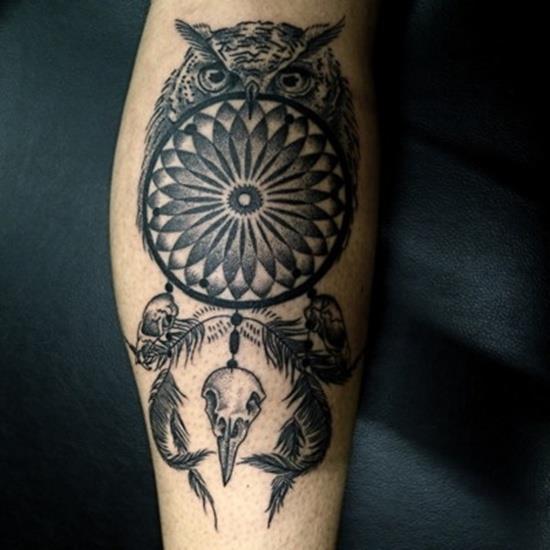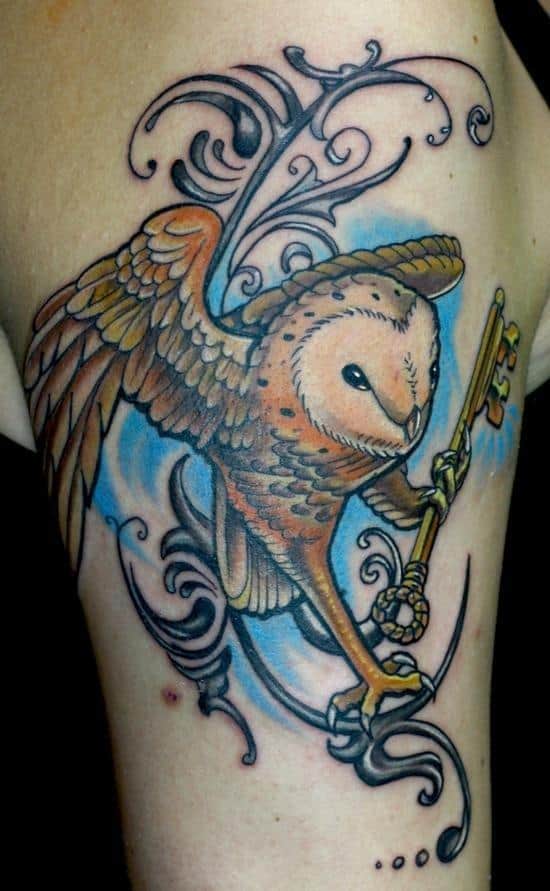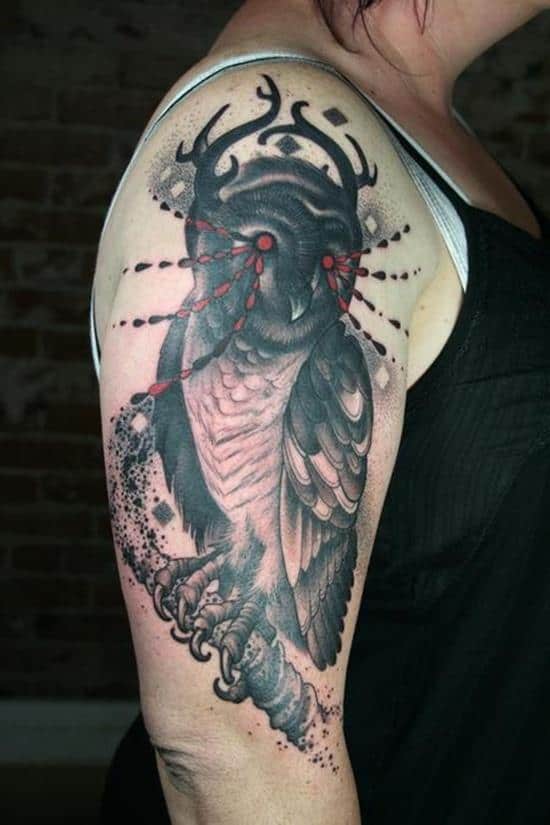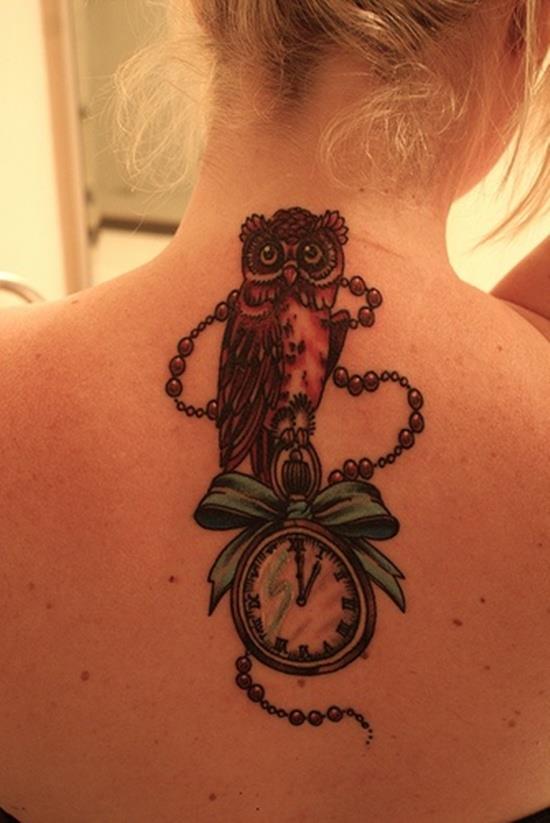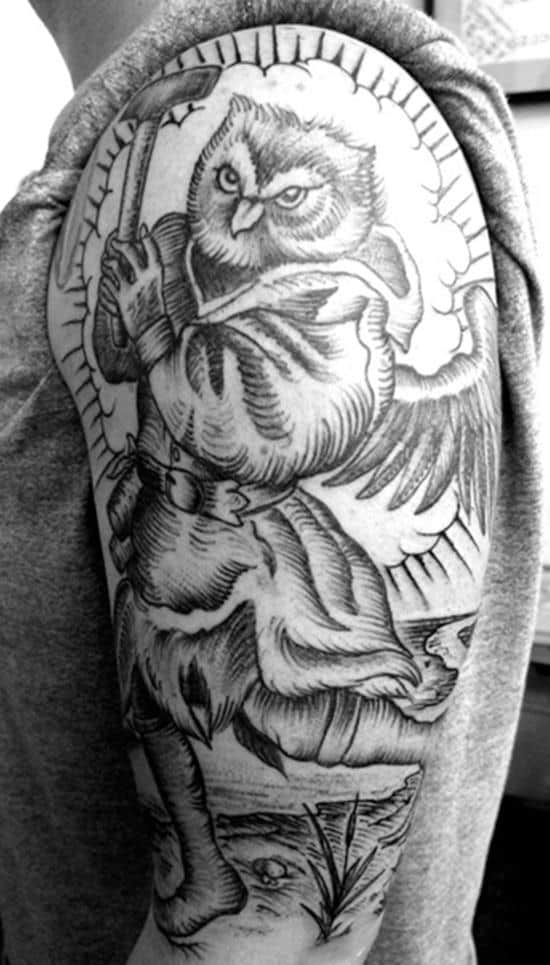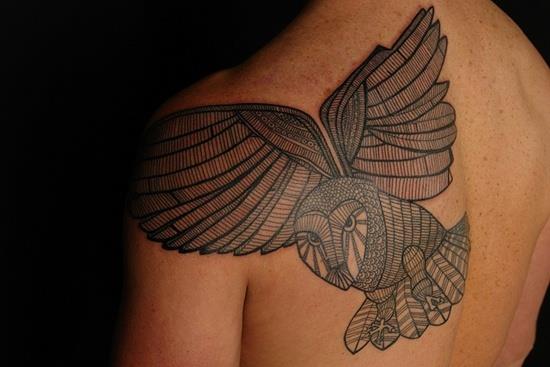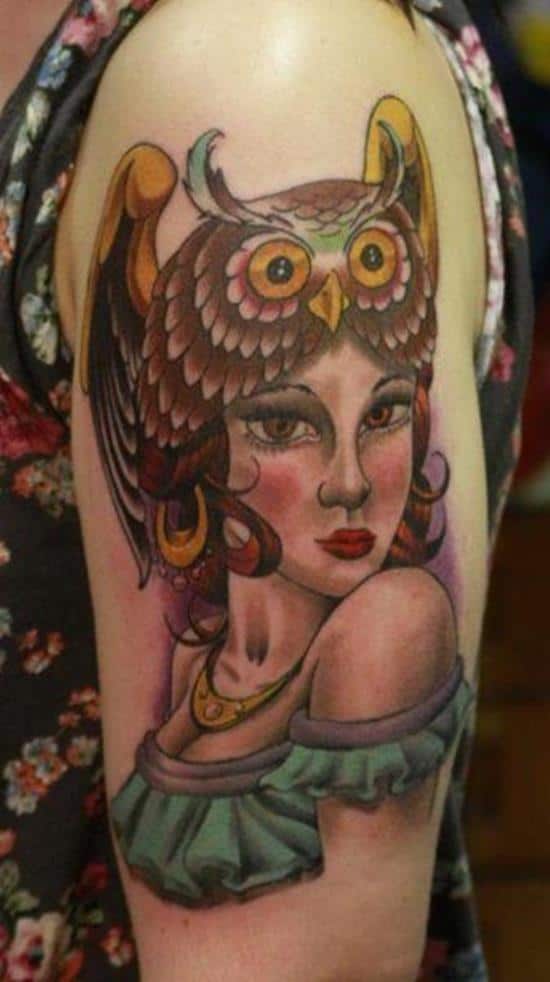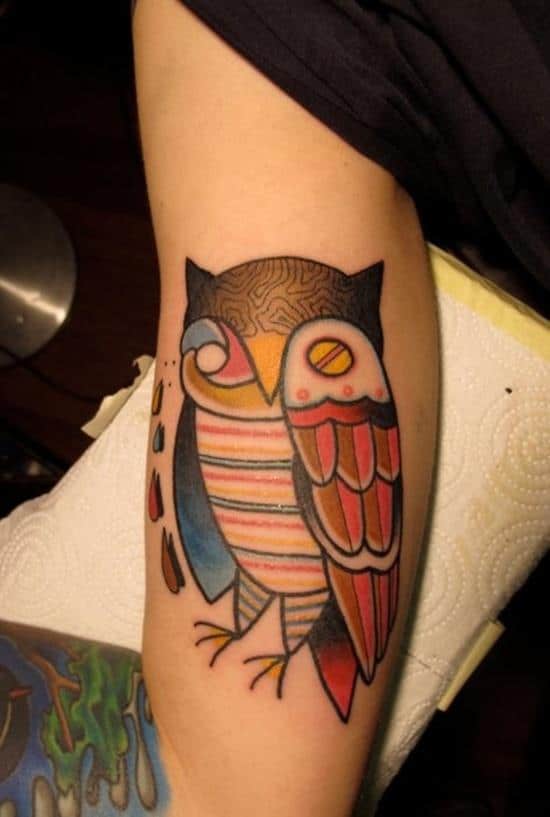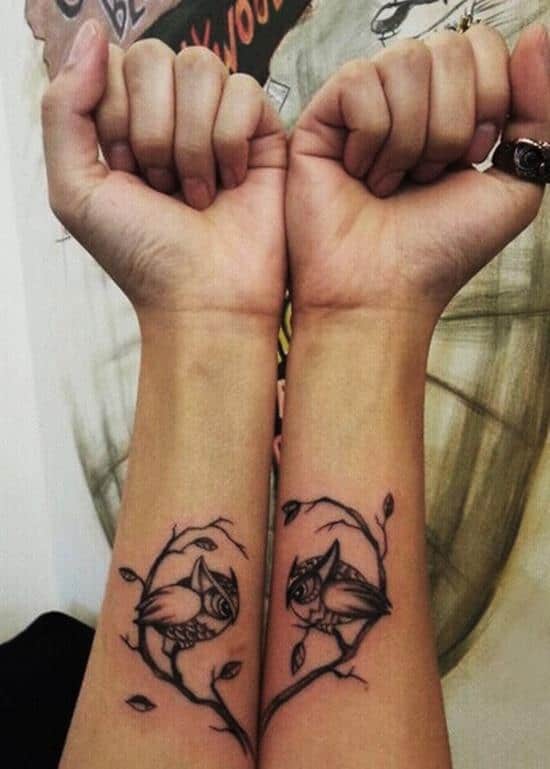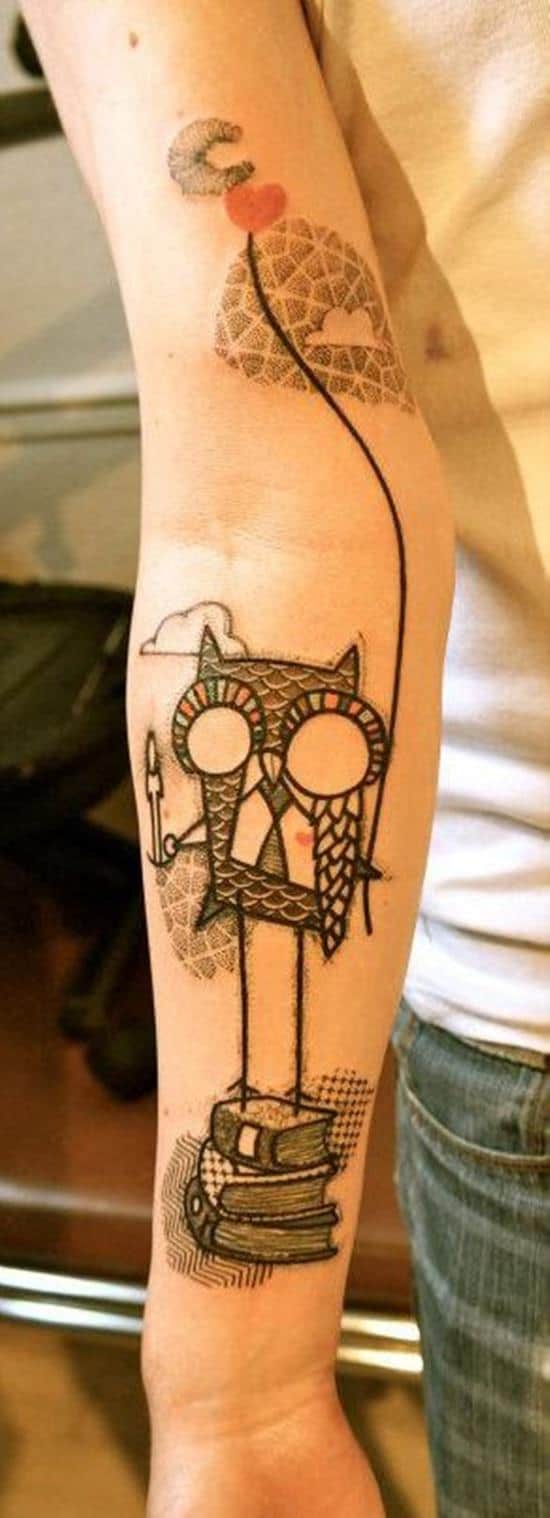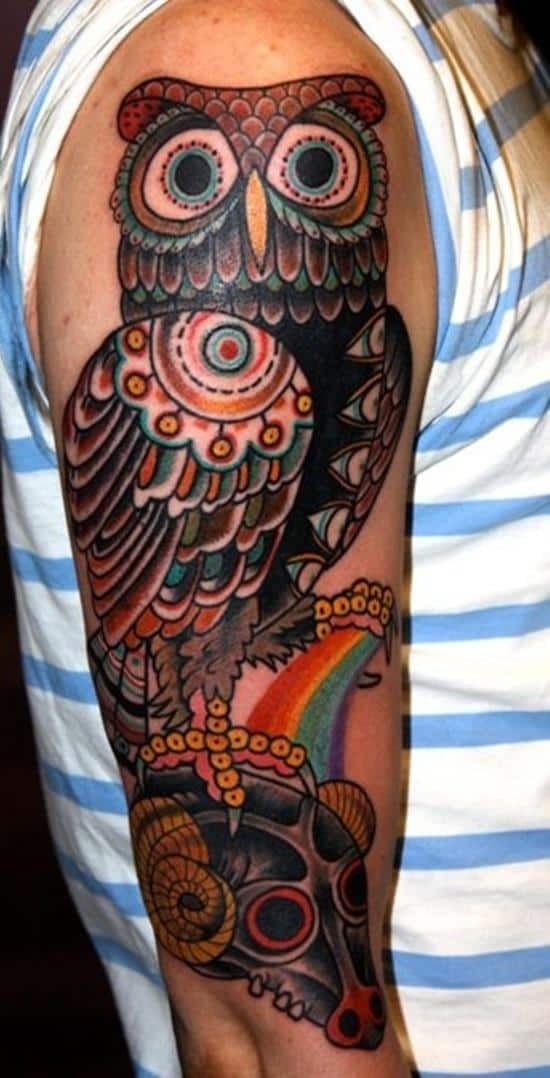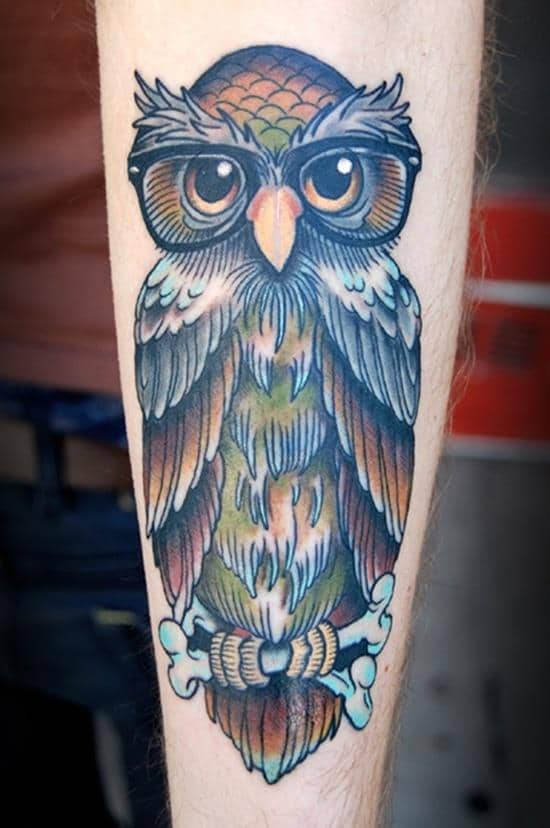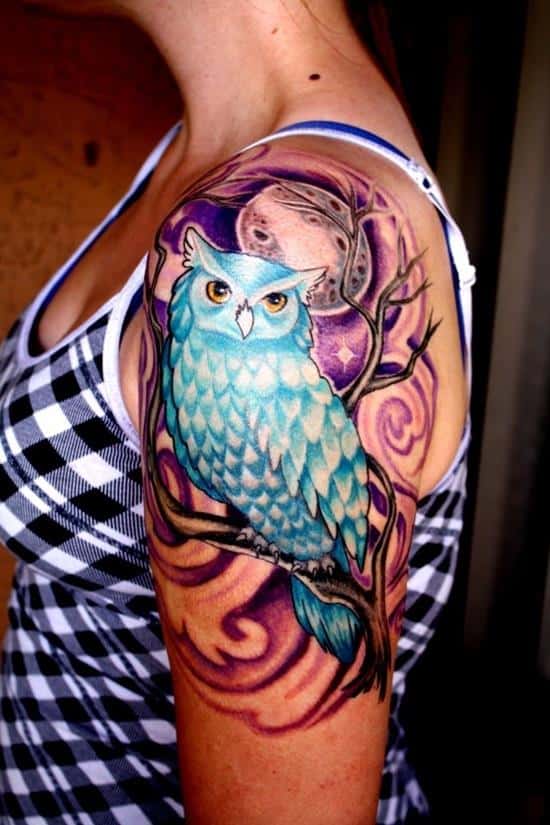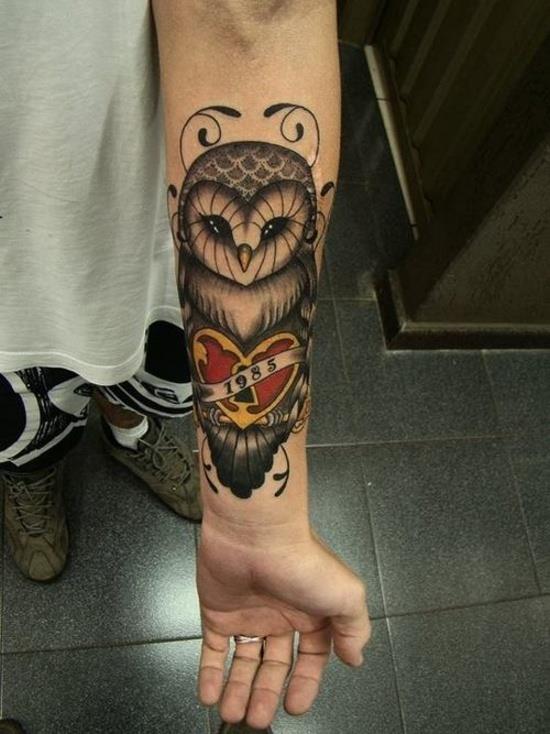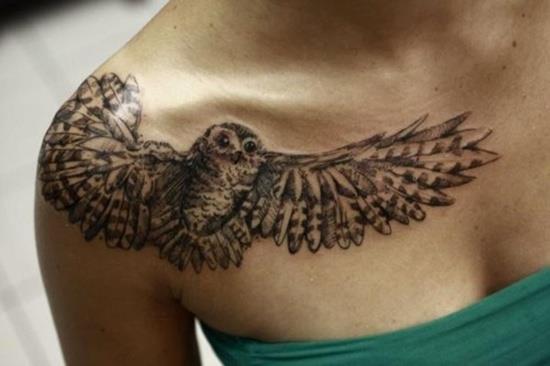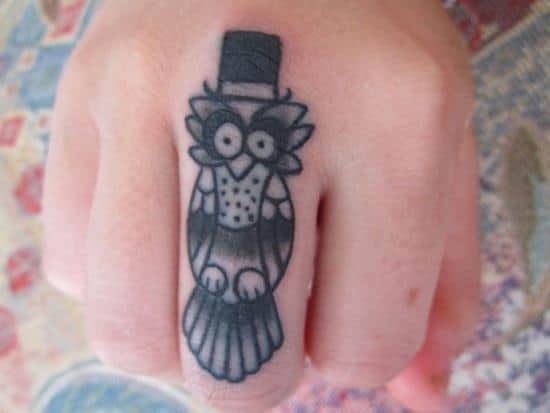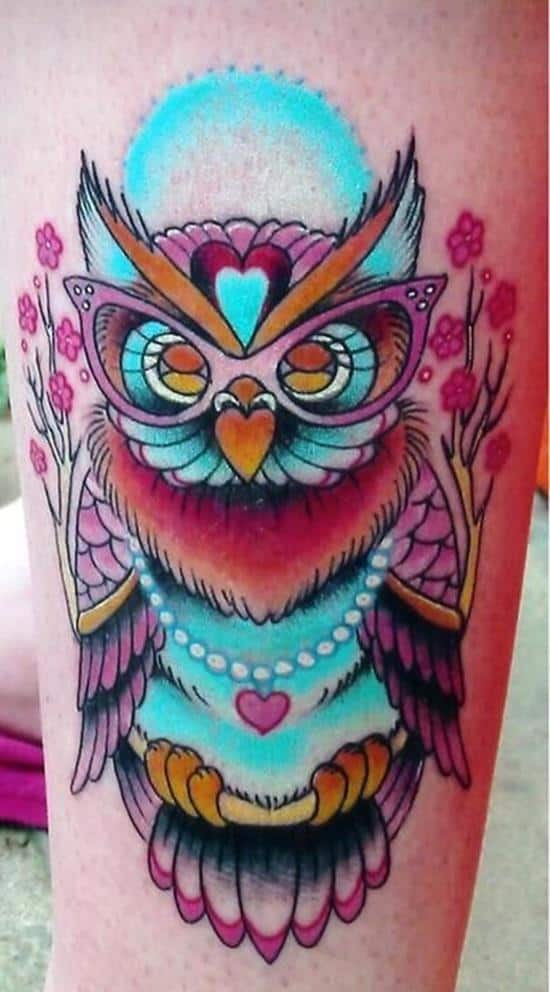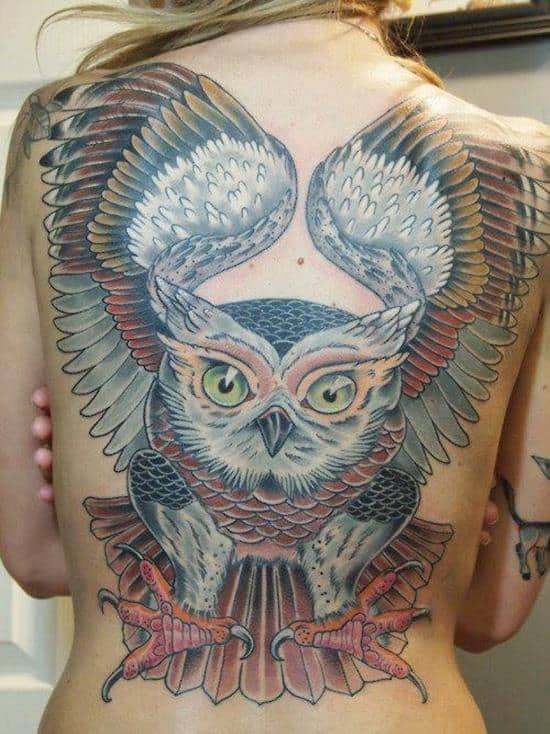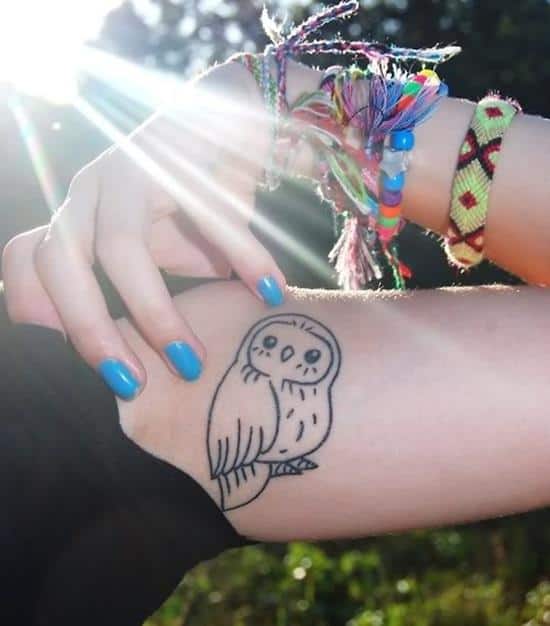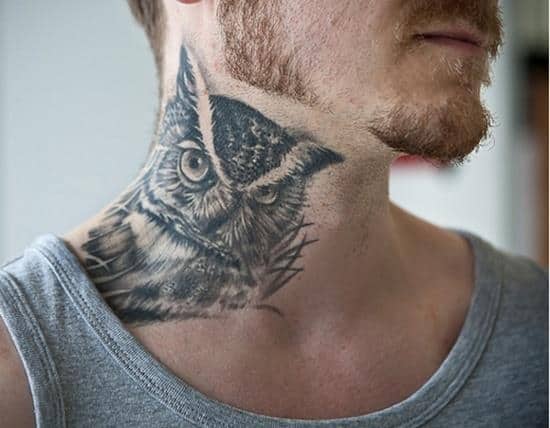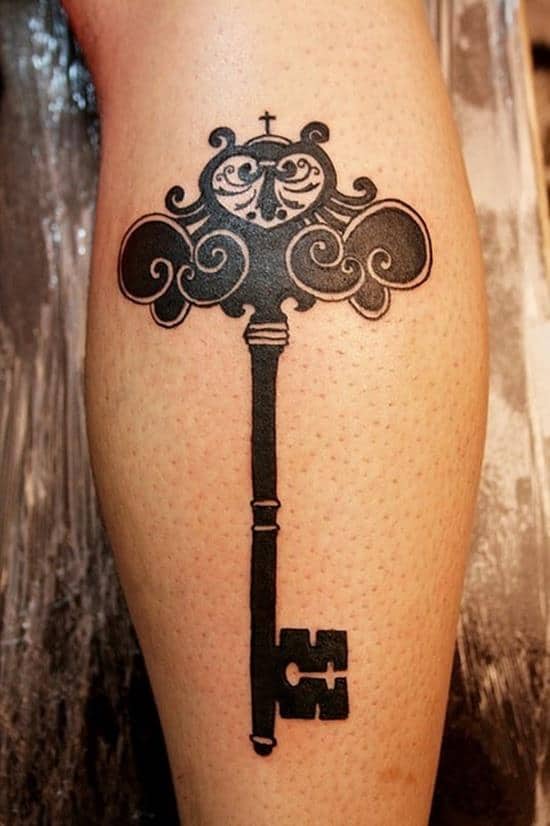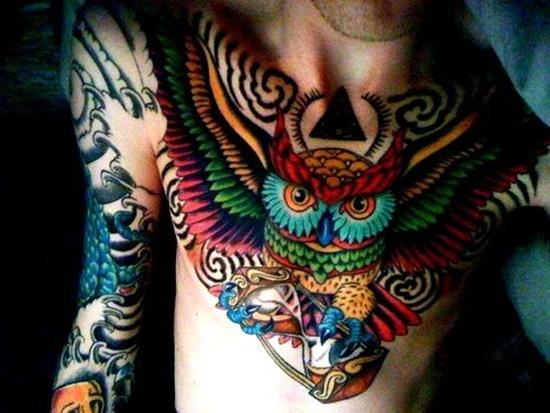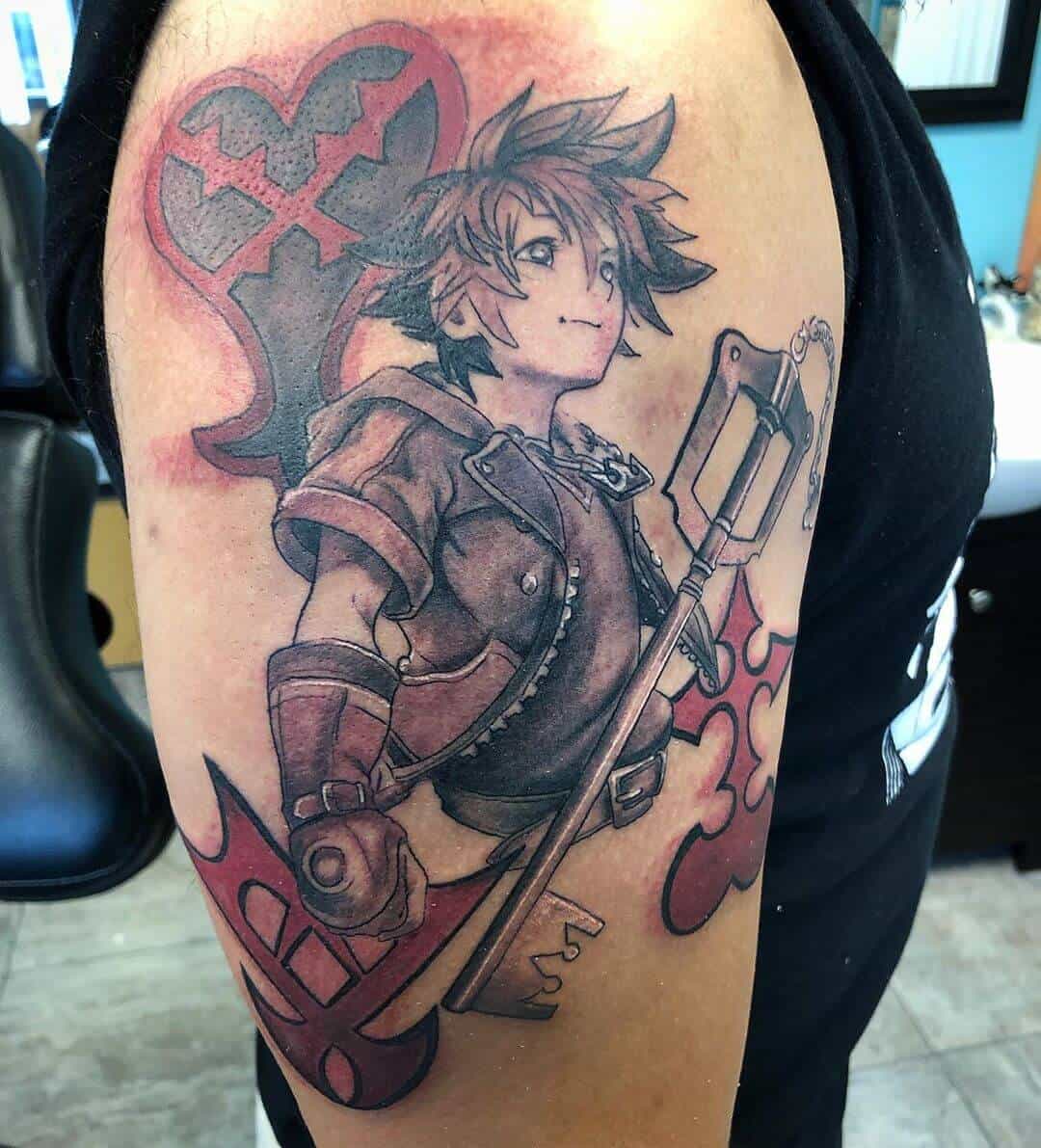Looking for some owl tattoo inspiration? We showcase some of the most amazing design ideas and explain the meanings behind them.
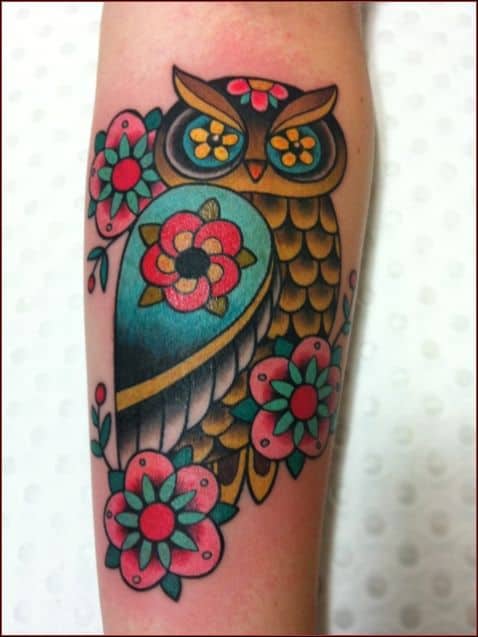
Of all the bird-themed tattoos out there, owls are bound to be among the top choices of subject – alongside hummingbirds and crows.
These beautiful, mysterious creatures make for truly excellent tattoos – partly because of how great they look in just about any style, and partly because there is a series of fascinating meanings associated with the owl as a symbol.
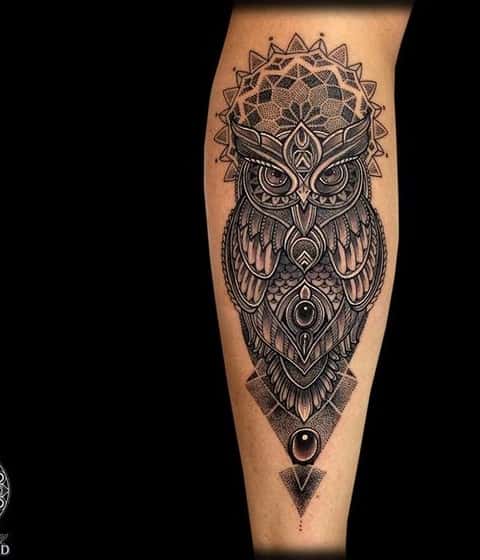
In this article, we’re going to look at the cultural meanings of the owl in order to discover the meaning of owl tattoos.
We’ll also cover some of the most popular owl-themed tattoo ideas and browse a huge gallery of inspiring designs!
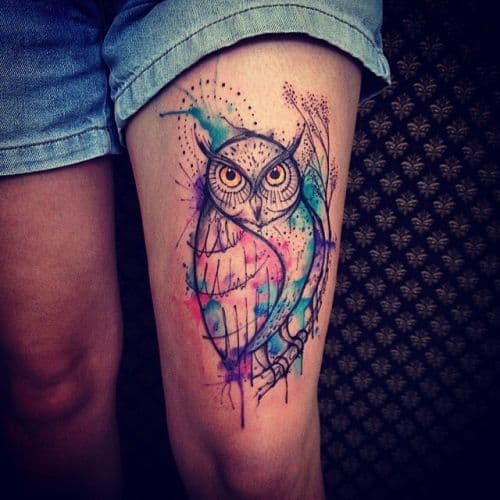
Owl tattoo meaning
As a symbol, the owl is a key part of most of the world’s cultural belief systems and mythologies.
Because of this, an owl design can mean a whole range of things, depending on the context in which the bird is depicted and, of course, the individual’s own interpretation of their chosen tattoo design.
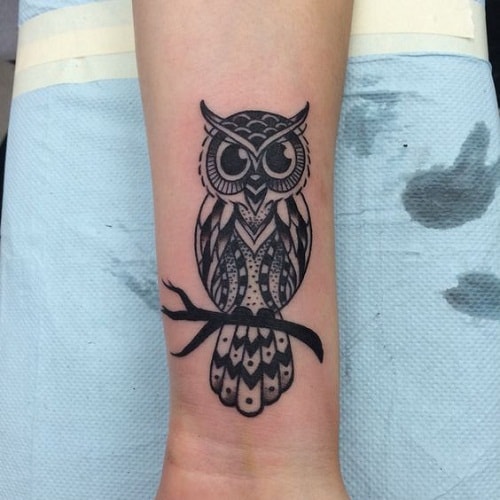
Wisdom
Owls are primarily symbolic of wisdom, intellect, and the value of learning and knowing.
We can easily observe this in modern everyday life – owls often appear on school-related designs, cartoon representations of owls with books or wearing glasses are also not hard to find.
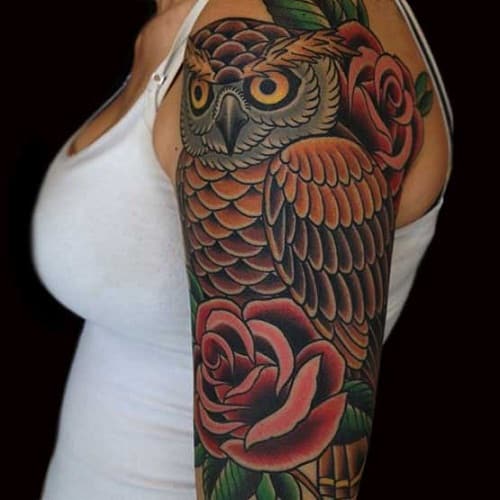
One of the possible origins for this association between owls and wisdom dates back to Ancient Greece and the goddess Athena.
She was the goddess of wisdom who, according to Homer, lost patience with her first bird – a crow – for being too frivolous.
Athena chose to replace the crow with an owl, seeing the suitably wise and serious.
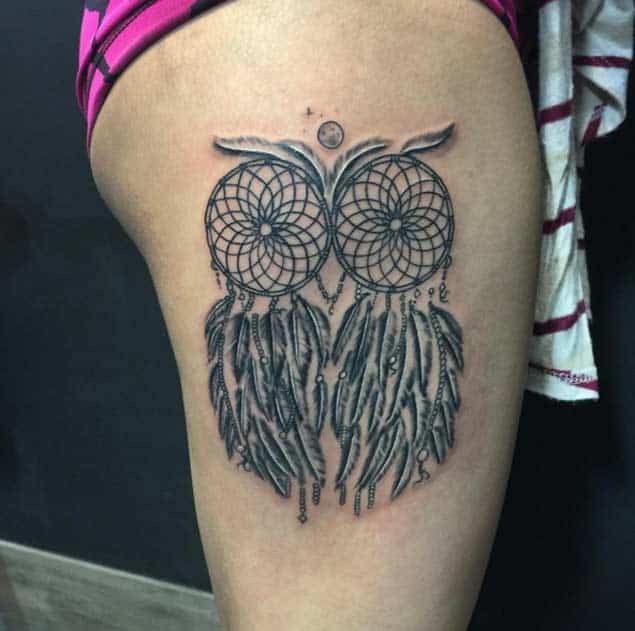
The specific species of owl that became Athena’s symbol was Athene noctua (notice the first part of the name…), the Little Owl.
This type of owl was commonly found in Greece at the time, including inside important locations such as the Acropolis.
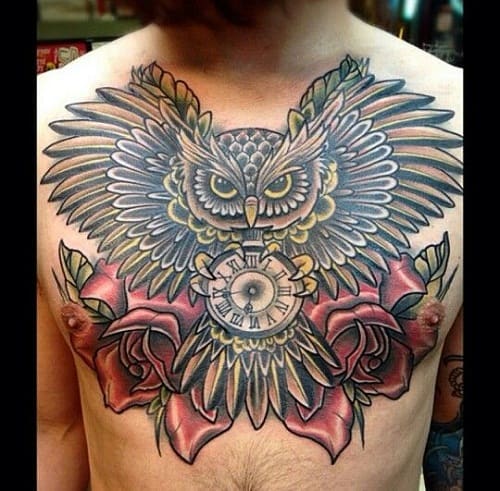
Protection
Owl tattoos can also signify protection and watchfulness since owls are often seen as symbolic of these concepts and act as guardians.
This symbolism is again likely to stem from Ancient Greece – as the symbol of Athena, the owl was seen as a protector that accompanied Greek armies to war.
An owl flying over the soldiers before battle was taken to be a sign of guaranteed victory.
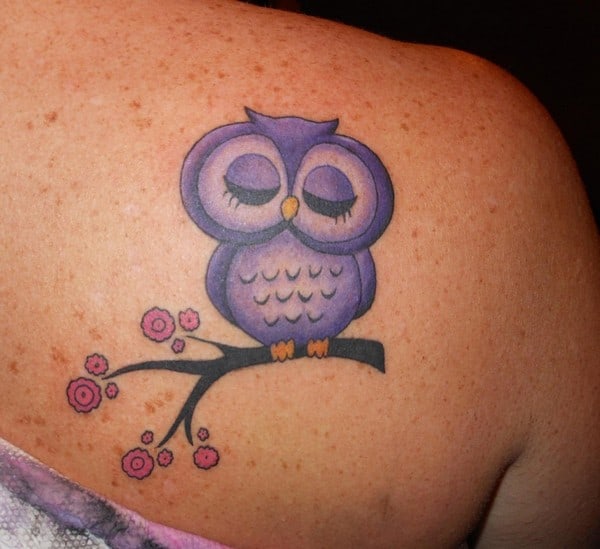
For a period, Greek coins (Tetradrachms) featured Athena on one side and an owl on the other. Through its presence on money, the owl was meant to keep a watchful eye on Athenian commerce.
Some Native American tribes also saw owls as symbolic of protection. For instance, the Dakota Hidatsa people believed the Burrowing Owl to be a protective spirit for warriors in particular.
The Lenape Indians, meanwhile, believed that to dream of an owl was to have one as a guardian.
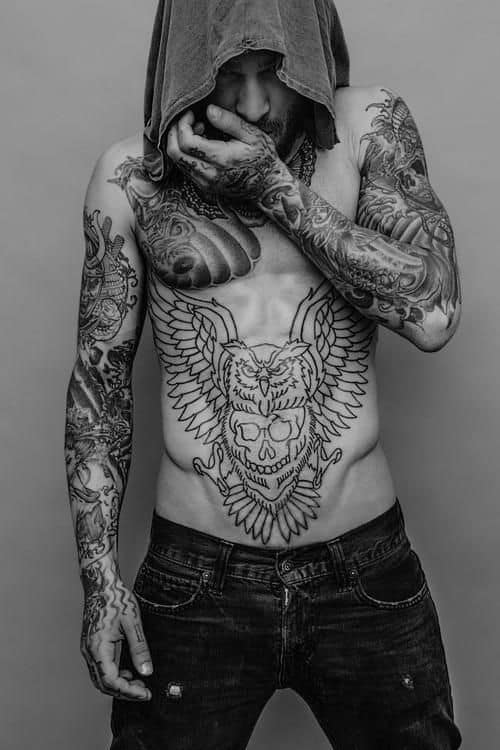
In Japan, owls are believed to bring good luck and protection from suffering. The Japanese word for owl, fukro, can be written in two ways: one with the literal meaning of luck, the other meaning protection.
This word-play has resulted in the popularity of owl-shaped decorations and lucky charms.
In Central Asia, the feathers from the breast and stomach of the Northern Eagle Owl were believed to be amulets protecting children and livestock from evils spirits.
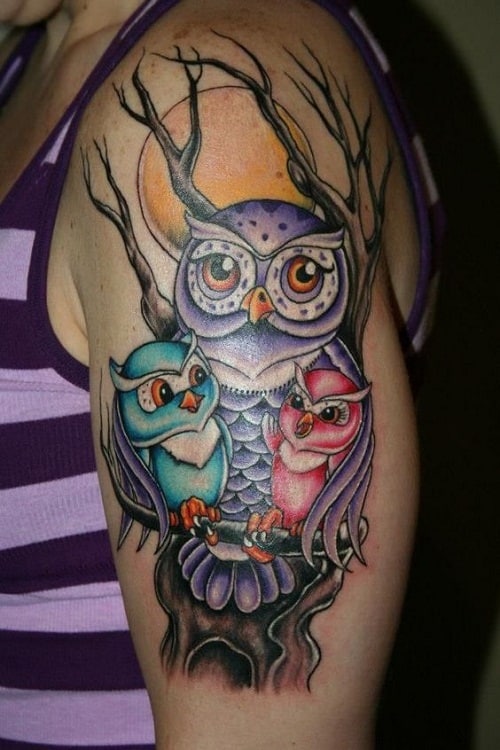
Hope
The owl’s ability to see in what we perceive to be complete darkness has created an association between this bird and hope.
Another meaning of an owl tattoo is staying positive and motivated and persevering towards achieving your dreams and goals.
The basic association is that if an owl can find its way in utter darkness, you too can find your way towards your aim, even if the path is not visible just yet.
Afterlife
Like many nocturnal creatures, owls also have associations with the concepts of darkness, death, and the underworld.
Owls in tattoos, therefore, can also be symbolic of the afterlife, the soul, and similar related ideas.
Among Native American tribes, again, there were many that believed owls to have ties to death and the afterlife. Apache Indians thought that a dream of an owl signified approaching death, for instance.
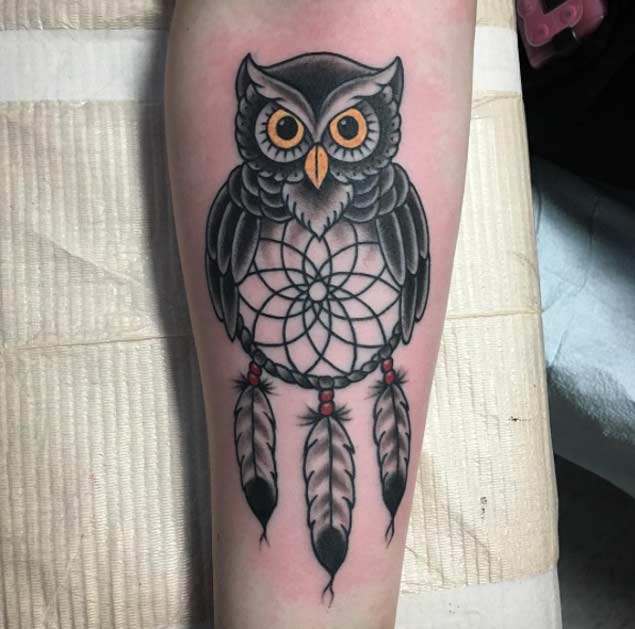
There is also a trend in some legends and mythologies to associate owls with souls in one way or another.
Mojave Indians believed that individuals became owls after death, while the Newuk tribe had a more specific belief: the brave and virtuous became Great Horned Owls after dying, and the wicked became Barn Owls.
Native Americans from the Sierras thought that the Great Horned Owl was tasked with capturing the souls of the dead and carrying them to the underworld.
The Native American Hopi tribe believed the Burrowing Owl to be a symbol of the god of the dead and a protector of the underworld.
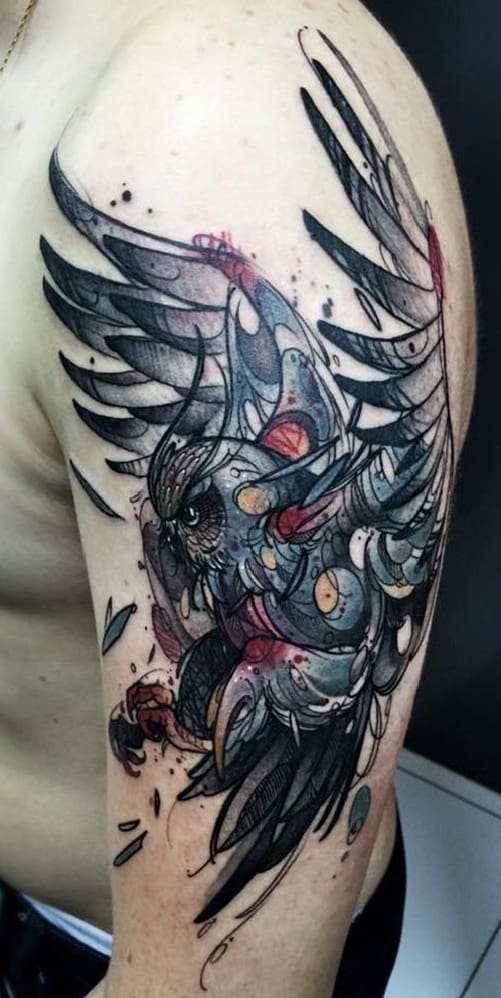
Transition
Owl tattoos can also symbolise the transition from one phase in your life to another. The death that they are sometimes associated with doesn’t have to be a literal, physical death – some people interpret this more broadly, as ‘the end’, instead.
This could mean the end of one period in your life before the start of another, or a major change you have gone through – or are about to go through.
Just as owls protect the living and guide the dead, they are believed to guide us through changes and transitions.
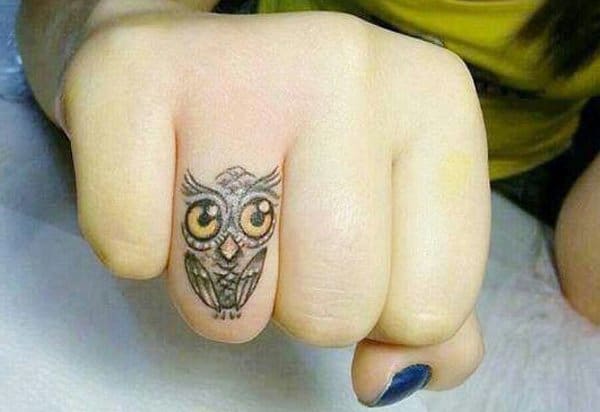
Magic
Owls have a strong association with magic and the supernatural. An owl tattoo can mean a connection with the extraordinary, a belief – or the wish for a belief – in realms beyond this one.
This connection reaches back to ancient mythologies, and is likely quite simple in origin – the night has always been a time humanity has equalled with the unknown, untested, unexamined, and mysterious.
Also, the wisdom with which owls are associated includes notions of ancient knowledge to which we have never had access.
Recommended: Our Buddha tattoo guide shouldn’t be missed!
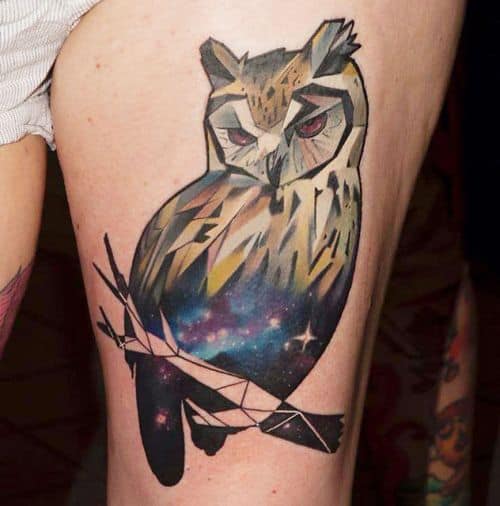
Early ancient Romans, for instance, believed that owls could cause evil – bring on curses and misfortune.
The way to neutralise this evil was to kill an owl and nail it to the door of the house – hoping the dead bird will provide protection from the misfortune it caused in the first place.
This strange custom persisted into the 19th century – in English folklore, nailing an owl to the barn door would ward off evil and lighting.
In many parts of the world, as far apart as Britain and Japan, owls were once believed to be able to predict the weather and, in some myths, the future – drawing on their connection to the supernatural and their access to forgotten knowledge.
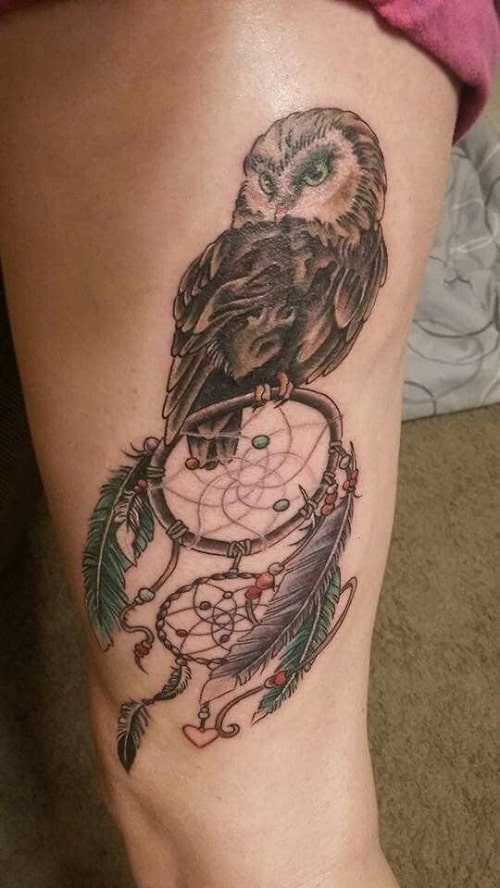
Snowy owl tattoos
Snowy owls are, as the name suggests, mostly white – with some black feathers interspersed among the white ones.
In general, snowy owls hold the same meanings as other owls in tattoos, although their white color serves to highlight certain aspects of their symbolism.
White is the color of purity, innocence, spirituality, and enlightenment. There is some overlap between these meanings and those of owls in general, yet a snowy owl is symbolic in particular of illumination, understanding, and purity of spirit. It’s also a symbol of endurance and dreams, and the ability to achieve our goals.
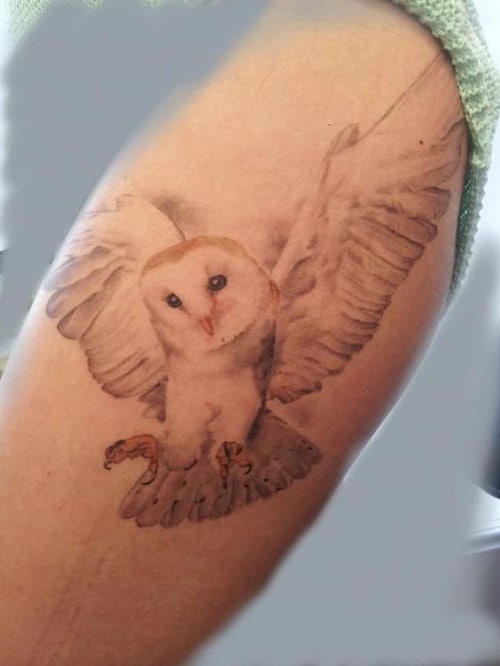
Owls in popular culture
Owls have shot up in popularity in Western culture in recent years thanks to the Harry Potter franchise, where they are featured prominently as useful pets – carriers of letters and parcels.
Owl tattoos are popular among the Harry Potter fanbase, usually represented in a way that ties in with the books or films – with the owl depicted carrying a letter or accompanied by other Harry Potter-themed imagery, such as wands or the magical symbols used in the series.
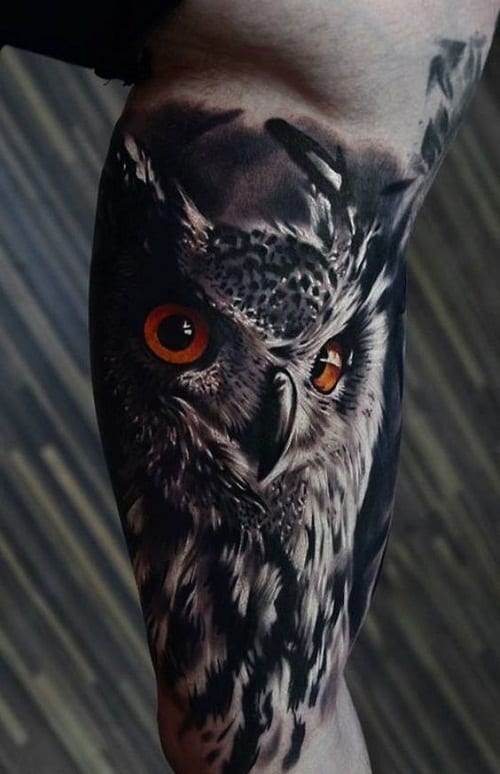
The overarching symbolism of the owl in modern Western culture is still that of wisdom – in cartoons and children’s stories, in particular, owls are independent, clever, serene, and acting as guides or consultants for other characters. They’ve become symbols of education, learning, and intelligence.
The unfortunate truth is that research has shown owls to be no more intelligent than the average bird species – they show no particular intellectual ability, and in fact are far surpassed by corvids (crows and ravens) in the cleverness department.
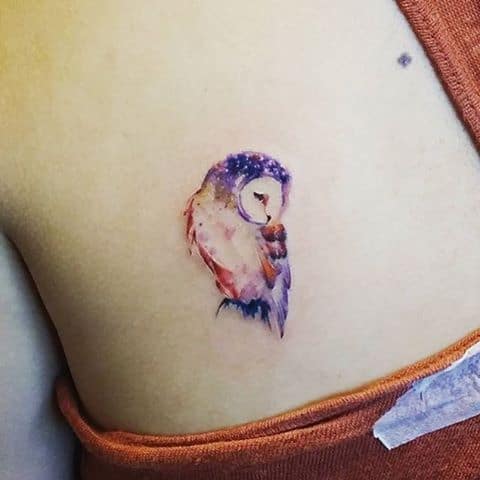
Popular design ideas
Highly characteristic and distinctive, owls are well-suited for just about any style of tattoo. Some of the most popular ideas include:
- Watercolor – although owls’ feathers are usually in shades of gray and brown, depending on the species, colorful owl tattoos are particularly popular. This puts an abstract and artistic spin on the classic image of the nocturnal bird. Watercolor tattoos usually involve a black, sketch-style outline, with soft coloring meant to resemble the look of a fresh watercolor painting.
- 3D – 3D tattoos are defined by their photo-realistic look. Experienced artists use careful shading and highlights to make the subject of the tattoo appear as life-like as possible. Owls don’t present a huge challenge when it comes to producing a realistic image, but it’s still advisable to choose an artist with proven experience in this style. The resulting tattoo will be eye-catching, unique, and intricate – realism requires plenty of detail.
- Geometric – the geometric style relies on the use of straight lines and dots, forming geometric shapes, typically arranged in a perfectly symmetrical way. Animals make highly popular subjects for geometric tattoos. In this style, owls are usually represented face-on, to enable the artist to produce a symmetrical image.
- Owl and timepiece tattoo – since owls symbolize transition among other things, depicting them with something indicating the passage of time can highlight this meaning. Popular choices include hourglasses and pocket watches.
- Owl and stars tattoo – since owls are nocturnal birds and typically seen at night, it makes sense to show them in tattoos alongside stars. This is particularly true if we consider the symbolic meaning of stars – that of achievement, excellence, and dreams – and how well it complements the meaning of an owl design. This can work either as having an owl and star(s) as two separate elements in one design, or by putting a night sky backdrop behind the image of the owl.
- Minimalistic – since owls are so distinctive, they make for great subjects for very small tattoos – which by necessity need to be relatively simple in order to look good when done. Tattooed in all black, sometimes using no more than several lines, these small owl tattoos can fit just about anywhere – even in spaces as small as the finger or the space behind the ear.
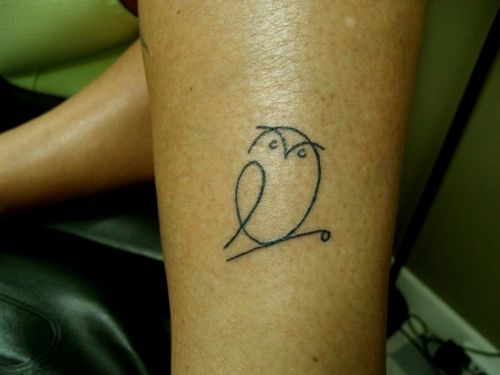
Placement guide
One of the things that makes owls such great tattoo subjects is how distinctive they are. Even in the most schematic, basic, minimalistic form, they are still recognizable as owls.
This means that an owl-themed design can technically be just about any size. We say ‘technically’, because of course it all depends on the complexity and level of intricacy involved in your planned design.
Complicated images with lots of detail won’t look good when done on an area that’s too small, and will age badly.
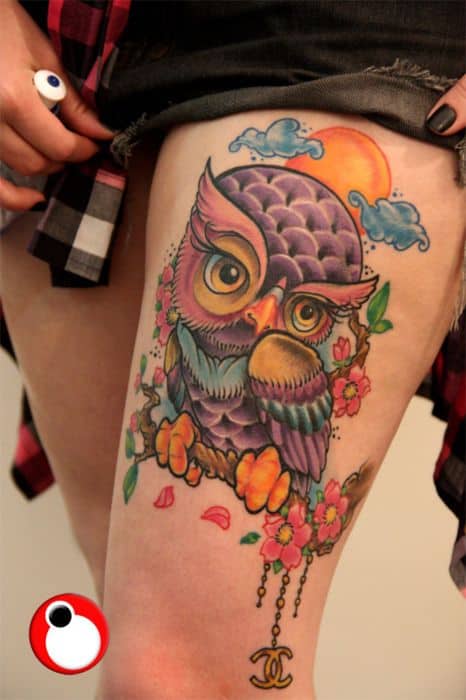
If you’re open to the idea of getting a large or medium-sized tattoo, consider appropriately sized areas such as your back, chest, bicep, thigh, or shoulder. How the tattoo owl occupies the space will also have an impact on how balanced the tattoo looks.
For instance, if you’re looking to get an owl body design across just the top of your back or your chest, consider choosing an image of an owl in flight, with its wings outstretched. This results in a horizontal design that fits well in that kind of space.
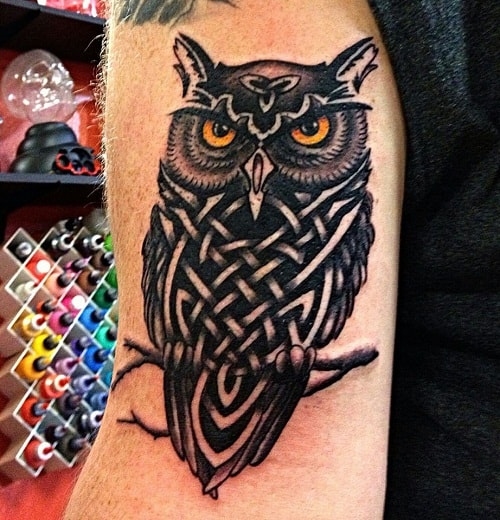
Small owl tattoos will need to be relatively simple – preferably all black with little to no shading. This will ensure that the lines don’t blur together and run into each other, either at the time of tattooing or later on, when the tattoo begins to age.
Obviously, a small tattoo can be placed just about anywhere – though it’s important to consider whether you like the visual effect of a lot of ‘blank space’ (untattooed skin) around the design. Most people opt for small areas for small tattoos – e.g. the wrist, back of the neck, or ankle.

